A little bit of history Kaweco was an iconic German pen firm which commenced production in 1883 in Heidelberg, where it remained until closure in 1980. In 1994 the brand was revived by pen enthusiast Michael Gutberlet, and relocated to Nuremburg. Here it has thrived, building on a solid legacy of excellent design and top-quality production standards.
The original Kaweco Dia appeared in 1921 as a traditional small piston-filler equipped with a 14k gold nib. The Kaweco Dia2 shares the look of the original Dia and a no-nonsense functionality. The modern Kaweco Dia2 is produced with computer numerically controlled machine tools and injection moulding of plastic resins and then brought for assembly and finishing at Nuremburg.
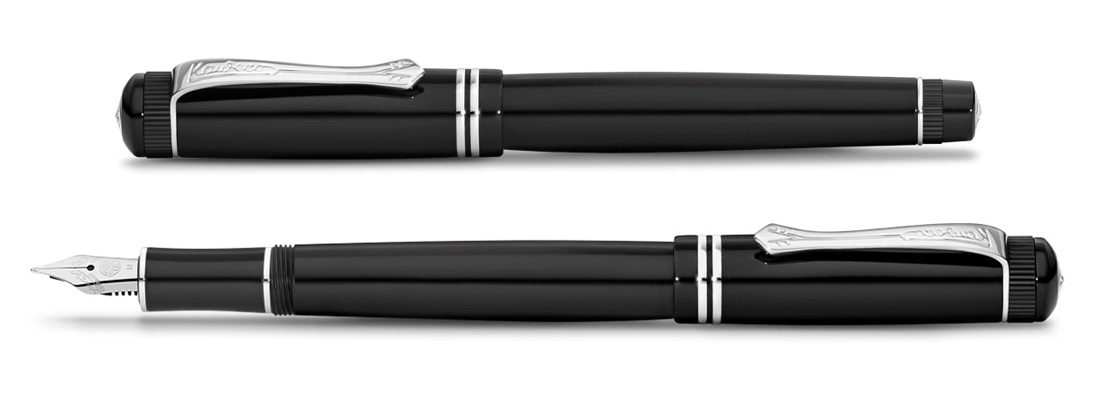 How it looks The Dia2 looks like a reborn classic pen, and comes in a plastic sleeve inside an art deco tin box. Nestled in a foam insert, with a small international cartridge, the pen is accompanied by a postage stamp fold-out history of the company and a Kaweco logo sticker to use, or not, as you please.
How it looks The Dia2 looks like a reborn classic pen, and comes in a plastic sleeve inside an art deco tin box. Nestled in a foam insert, with a small international cartridge, the pen is accompanied by a postage stamp fold-out history of the company and a Kaweco logo sticker to use, or not, as you please.
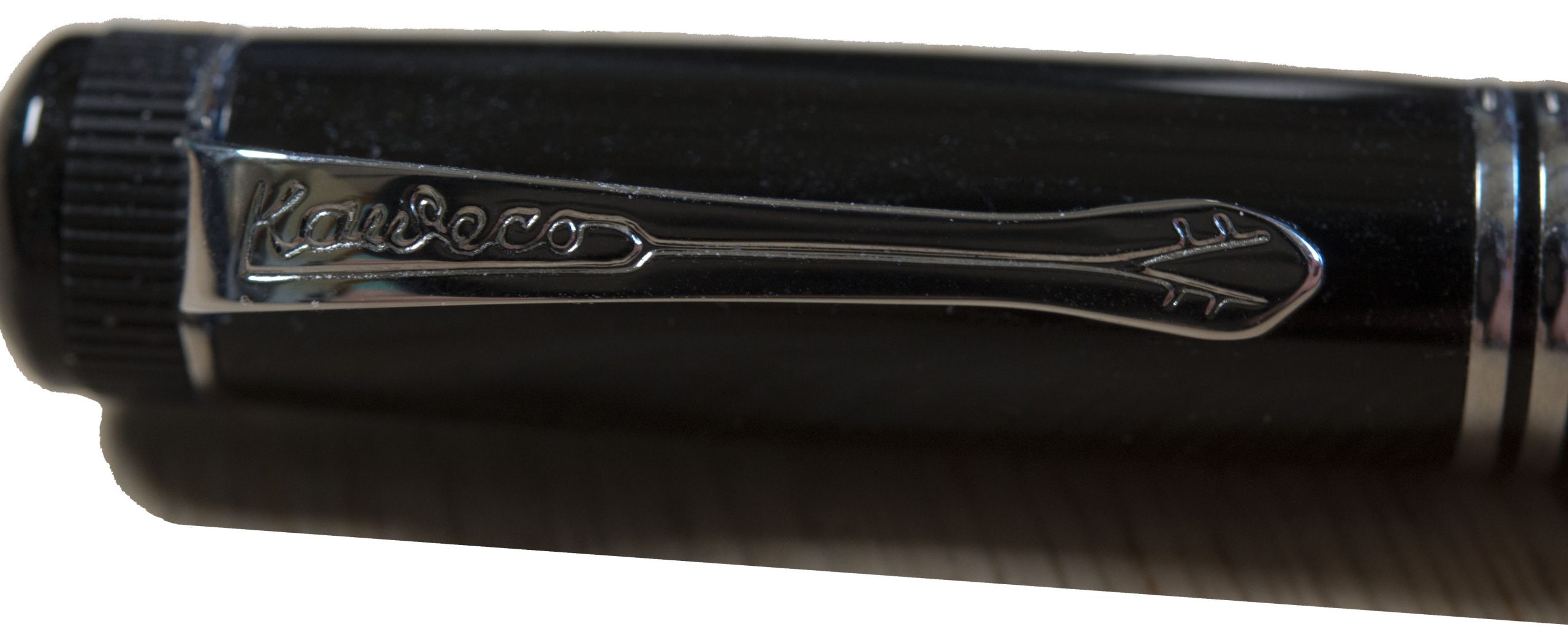 How it feels The pen can be considered a medium-sized pen by current standards. Sleekly black-bodied, it is a mainly resin model but with aluminium and brass parts that give it a comforting feel of durability and a surprisingly hefty solidity in the hand.
How it feels The pen can be considered a medium-sized pen by current standards. Sleekly black-bodied, it is a mainly resin model but with aluminium and brass parts that give it a comforting feel of durability and a surprisingly hefty solidity in the hand.
 How it fills The pen cap and body finials feature the tricuspid Kaweco logo as well as a knurled band on the cap and end of the body. The latter is reminiscent of the original Dia’s piston filling mechanism. But pistons add cost, so the reborn Dia makes do with the well-tried cartridge/converter set-up.
How it fills The pen cap and body finials feature the tricuspid Kaweco logo as well as a knurled band on the cap and end of the body. The latter is reminiscent of the original Dia’s piston filling mechanism. But pistons add cost, so the reborn Dia makes do with the well-tried cartridge/converter set-up.
 Crucially, how it writes… This depends a little upon what nib you chose to fit. As standard, the Dia comes with the diminutive Bock 060 nib better known from the smaller Sport and Lilliput models. That looks a bit titchy with this full-size body, but thankfully there’s a better-proportioned #5 alternative in the shape of the wider-shouldered 076. An 076 was sourced from Beaufort Ink and, even though it lacked the Kaweco branding, it looked a lot happier. Both nibs delivered the ink well and there’s every sign that this will prove a trustworthy ‘daily driver’.
Crucially, how it writes… This depends a little upon what nib you chose to fit. As standard, the Dia comes with the diminutive Bock 060 nib better known from the smaller Sport and Lilliput models. That looks a bit titchy with this full-size body, but thankfully there’s a better-proportioned #5 alternative in the shape of the wider-shouldered 076. An 076 was sourced from Beaufort Ink and, even though it lacked the Kaweco branding, it looked a lot happier. Both nibs delivered the ink well and there’s every sign that this will prove a trustworthy ‘daily driver’.
 Pen! What is it good for? This one wants to work in an old-fashioned sort of office, but could handle modern jotting duties just as well.
Pen! What is it good for? This one wants to work in an old-fashioned sort of office, but could handle modern jotting duties just as well.
 VFM You can buy the chrome Dia2 for £75 to £90 from UK pen sellers. The gold-plated fixture version comes with a £15 premium on top. A Kaweco converter is about £5. The 076 Bock nib will set you back another £10. Overall, and in a crowded market segment, we think that represents pretty good value for money.
VFM You can buy the chrome Dia2 for £75 to £90 from UK pen sellers. The gold-plated fixture version comes with a £15 premium on top. A Kaweco converter is about £5. The 076 Bock nib will set you back another £10. Overall, and in a crowded market segment, we think that represents pretty good value for money.
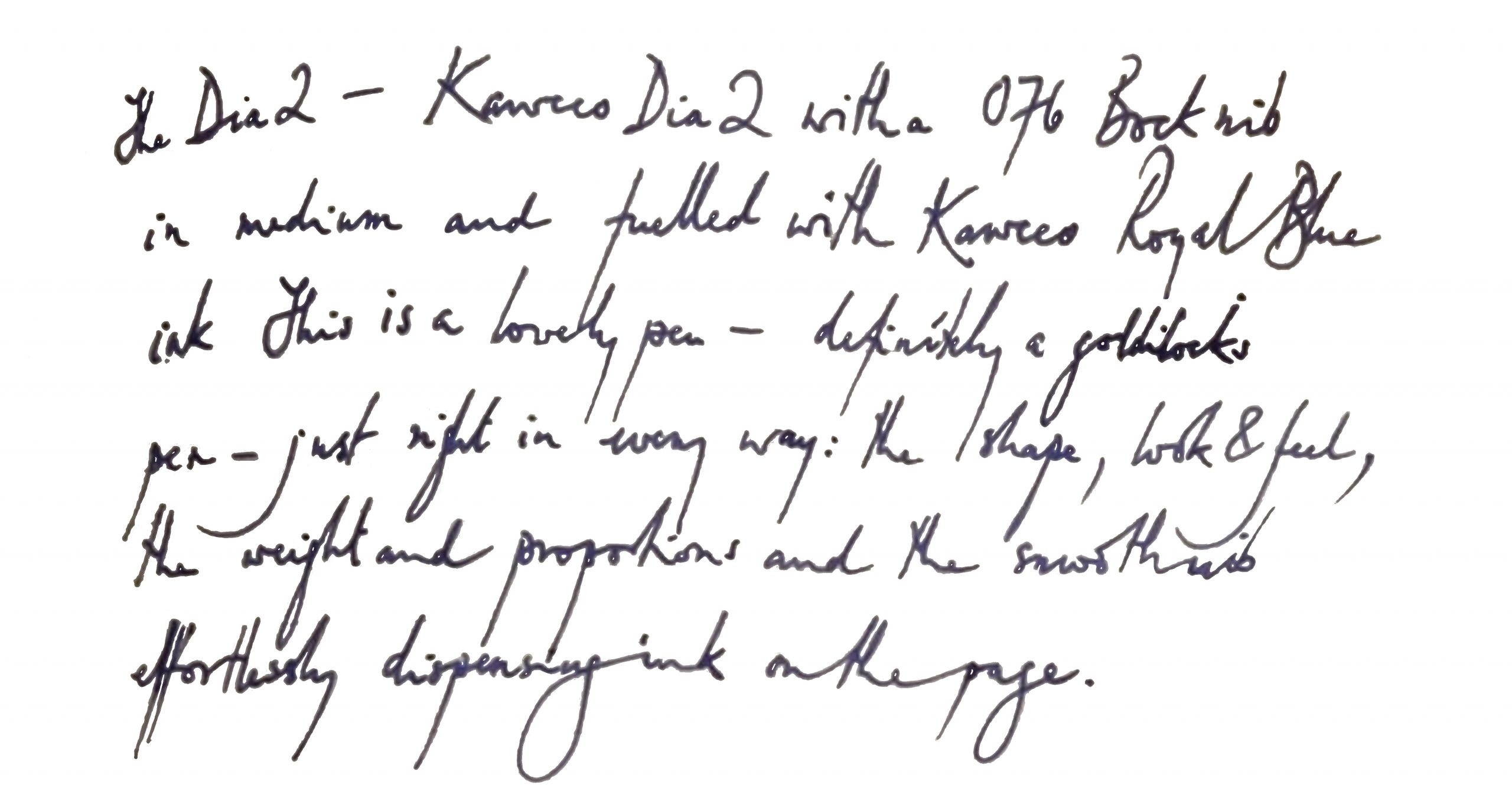 The only way is ethics It’s made in factories with decent labour conditions, as far as we can tell, and the packaging isn’t over the top. Fit a converter and there’s a tiny bit less disposable plastic, too.
The only way is ethics It’s made in factories with decent labour conditions, as far as we can tell, and the packaging isn’t over the top. Fit a converter and there’s a tiny bit less disposable plastic, too.
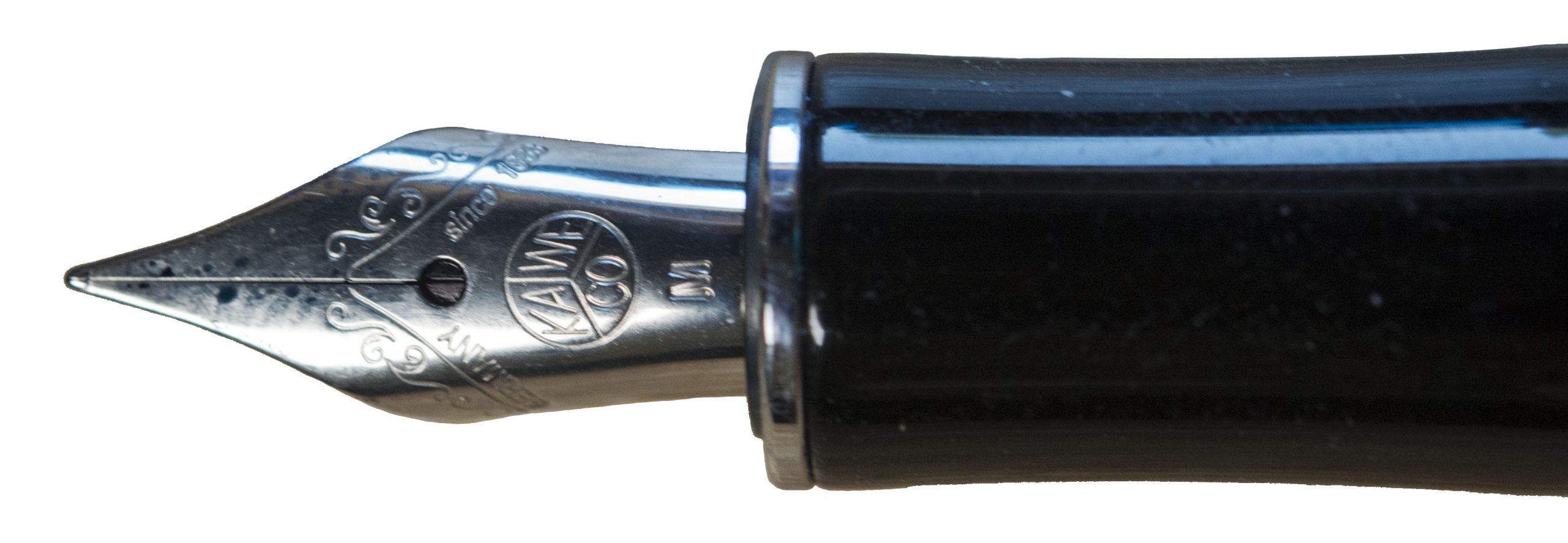 If this isn’t quite your cup of tea, but almost… Take a look at the Supra.
If this isn’t quite your cup of tea, but almost… Take a look at the Supra.
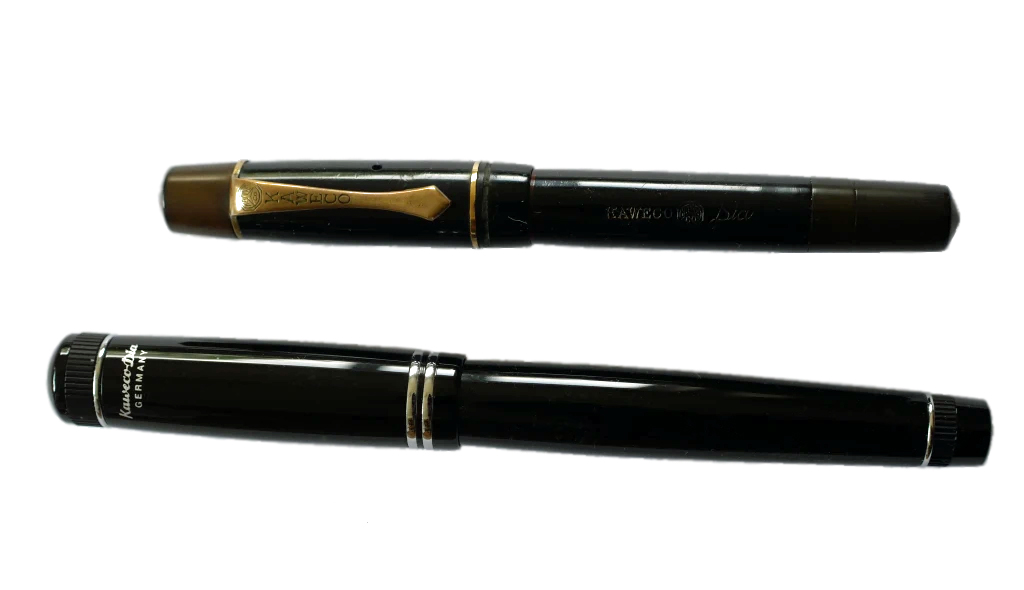 Our overall recommendation If you like the look of the old Dia, you’ll be friends with the Dia2.
Our overall recommendation If you like the look of the old Dia, you’ll be friends with the Dia2.
 Where to get hold of one All the usual pen retailers; it may resemble an exotic classic but thankfully this is no rarity.
Where to get hold of one All the usual pen retailers; it may resemble an exotic classic but thankfully this is no rarity.
 This meta-review references:
This meta-review references:
- Scribble Monboddo’s dairy diary
- Dapprman’s dialling-down
- Nick Stewart’s dia-gnosis
- Mick’s diarama
Thanks to Kaweco for the review sample, now well-travelled and happily adopted by one of the reviewing team who just couldn’t let it go.
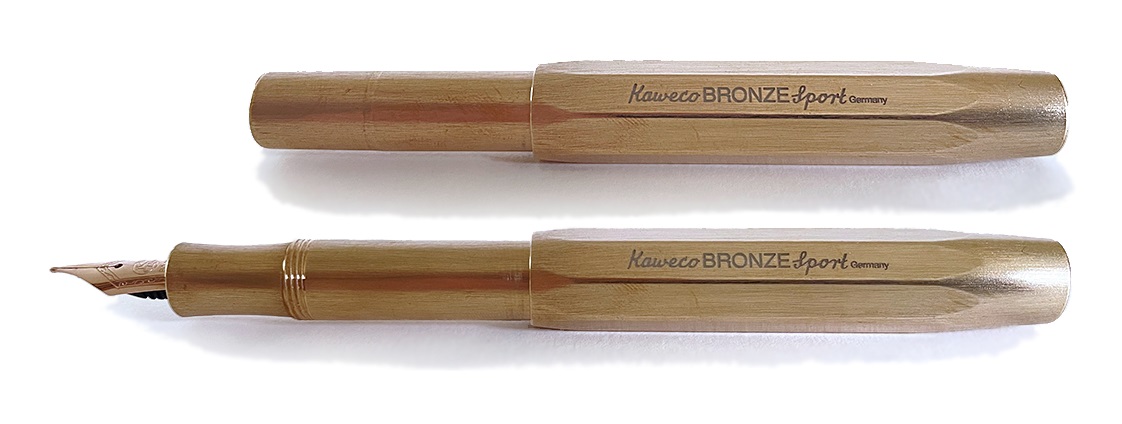 How it looks Like a slightly rosier version of the brass Sport, in short. That doesn’t really do it justice, though. In the modern world there’s not so much bronze to be encountered in every day life so this looks special, unusual, and maybe even a bit other-worldly – or perhaps an object from another time. That Nuremberg Tardis has been busy! Opinion is divided on whether to polish or tarnish, and adherents of either camp regard their opposites as absolute barbarians, so perhaps it is best to observe simply that if you buy one, the choice is yours.
How it looks Like a slightly rosier version of the brass Sport, in short. That doesn’t really do it justice, though. In the modern world there’s not so much bronze to be encountered in every day life so this looks special, unusual, and maybe even a bit other-worldly – or perhaps an object from another time. That Nuremberg Tardis has been busy! Opinion is divided on whether to polish or tarnish, and adherents of either camp regard their opposites as absolute barbarians, so perhaps it is best to observe simply that if you buy one, the choice is yours. How it fills As with all Sports, syringe-filling a cartridge is the most cost-effective way to get a usable quantity of ink in to the diminutive barrel. It’s not too tricky once you get used to it.
How it fills As with all Sports, syringe-filling a cartridge is the most cost-effective way to get a usable quantity of ink in to the diminutive barrel. It’s not too tricky once you get used to it. Pen! What is it good for? As originally intended, it’s a classic pocket pen and does that job mightily well too. But with a bit of work with Brasso, it will look the business on display on your desk too.
Pen! What is it good for? As originally intended, it’s a classic pocket pen and does that job mightily well too. But with a bit of work with Brasso, it will look the business on display on your desk too. The only way is ethics Made in Germany, with minimal packaging, there are no major worries on this count.
The only way is ethics Made in Germany, with minimal packaging, there are no major worries on this count.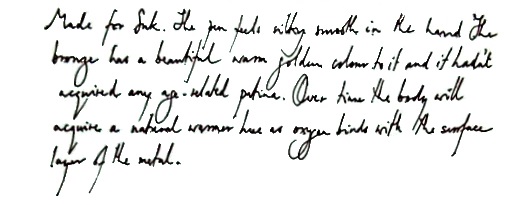 Our overall recommendation The Sport is a robust workhorse beloved of many of a fountain pen fan. If you like a weighty pen, and the look of bronze appeals, go for it.
Our overall recommendation The Sport is a robust workhorse beloved of many of a fountain pen fan. If you like a weighty pen, and the look of bronze appeals, go for it.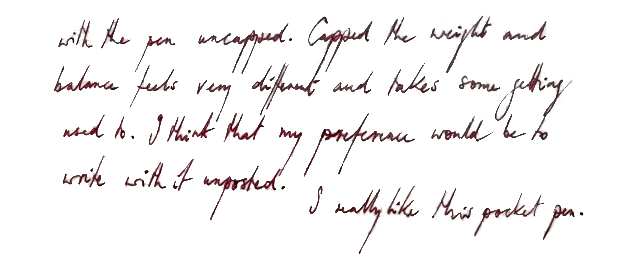 This meta-review references:
This meta-review references: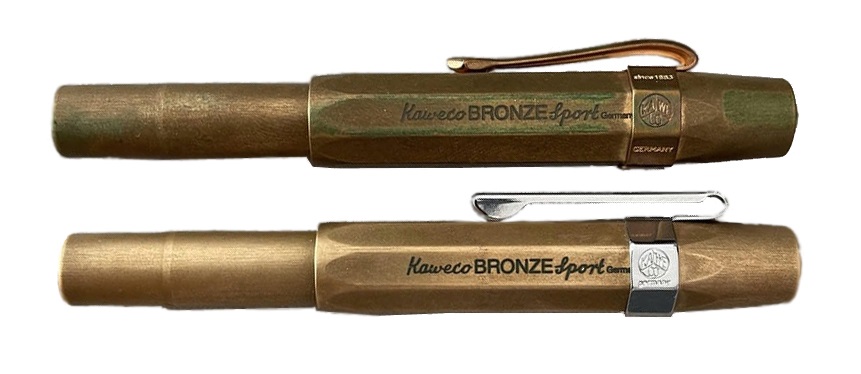

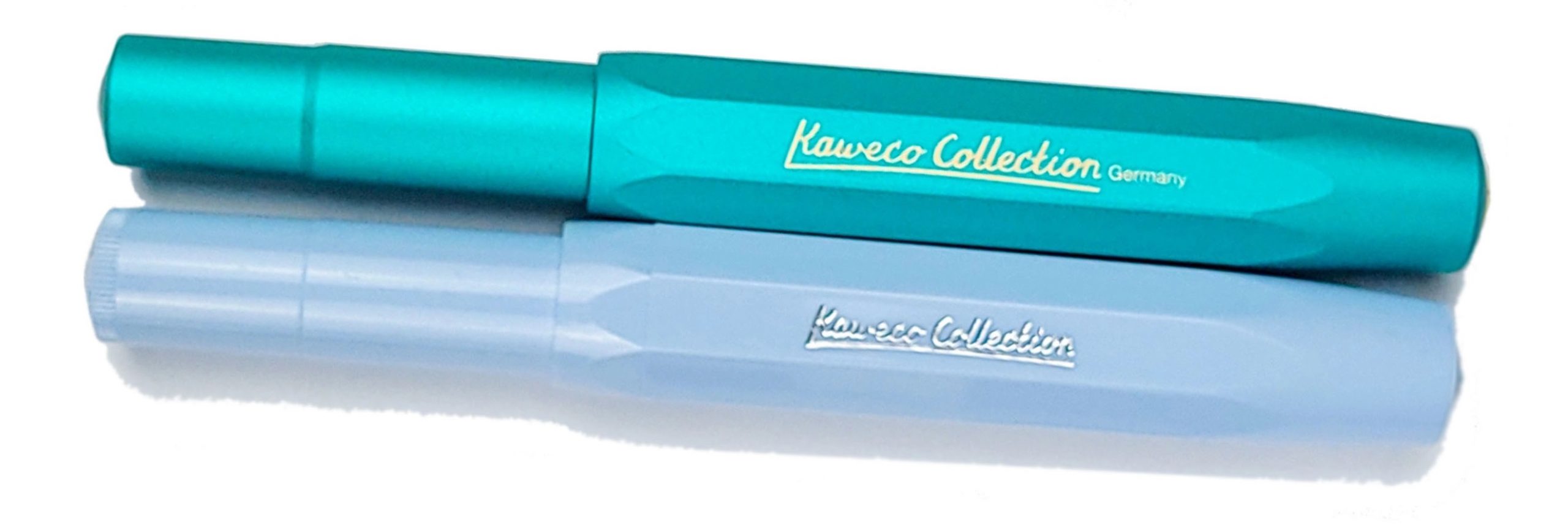 How it looks It looks much like any other Sport but in a pair of rather sophisticated colours, and with ‘Kaweco Collection’ proudly displayed on the side of the barrel. No complaints there; if you’re a Sport fan, you probably want already simply after looking at these pictures – and that’s rather the brand’s plan.
How it looks It looks much like any other Sport but in a pair of rather sophisticated colours, and with ‘Kaweco Collection’ proudly displayed on the side of the barrel. No complaints there; if you’re a Sport fan, you probably want already simply after looking at these pictures – and that’s rather the brand’s plan.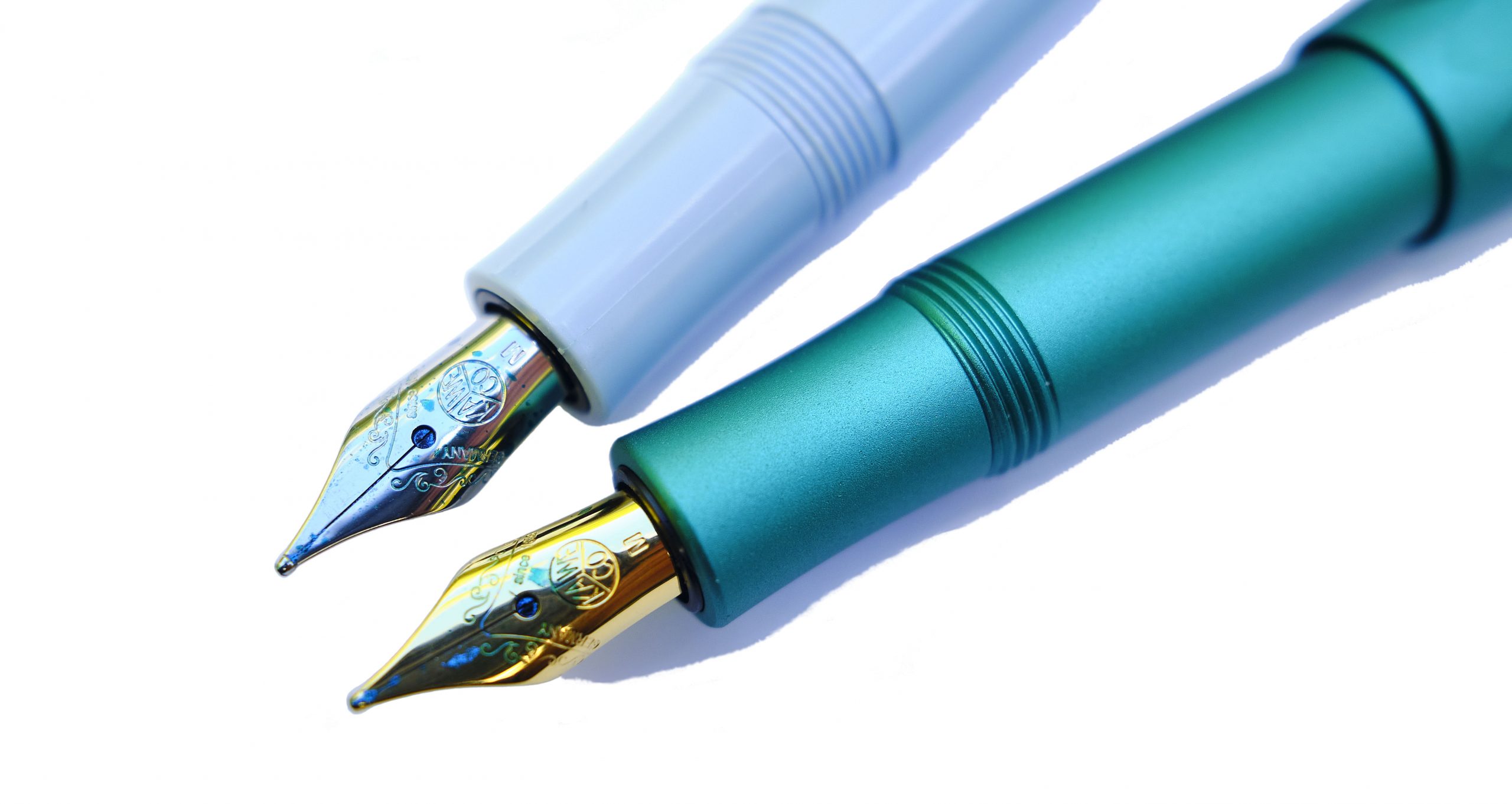 How it feels Small, and light. As usual, the aluminium version feels a touch more robust, but far from heavy. Like you’d expect a Sport to feel, really; the difference is all visual.
How it feels Small, and light. As usual, the aluminium version feels a touch more robust, but far from heavy. Like you’d expect a Sport to feel, really; the difference is all visual.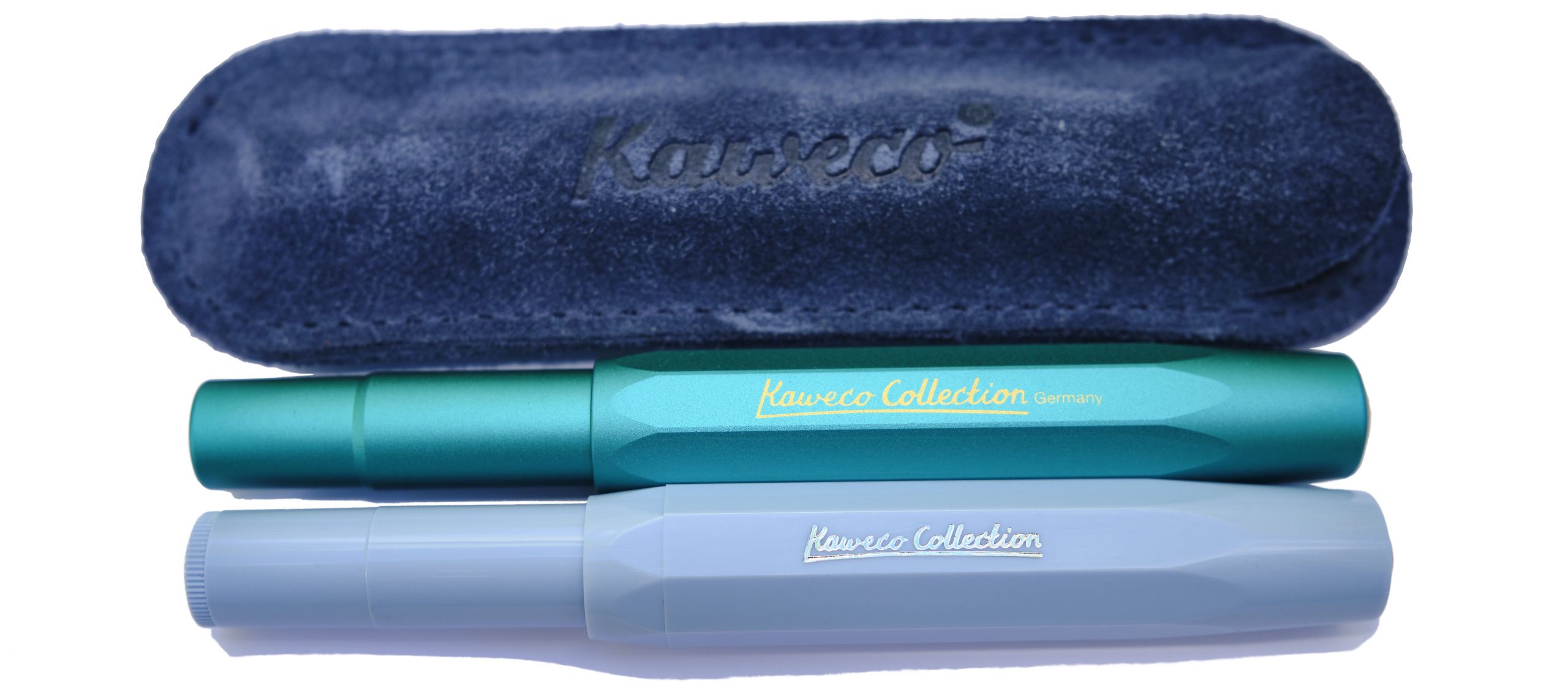 How it fills As ever, syringe-filling a small international cartridge would be our tip. There is a tiny push-rod converter, but the ink runs out so quickly that scope for frustration is considerable.
How it fills As ever, syringe-filling a small international cartridge would be our tip. There is a tiny push-rod converter, but the ink runs out so quickly that scope for frustration is considerable. Crucially, how it writes… Generally, pretty well. The quality control on the steel nibs has improved in recent years, and for the pricier aluminium version any Bock 060 nib can be screwed in if you fancy a change. There’s even a gold option, should pushing the boat out that far be on the agenda. We stuck with the standard steel M, probably the most popular option, for this test and the results were encouraging.
Crucially, how it writes… Generally, pretty well. The quality control on the steel nibs has improved in recent years, and for the pricier aluminium version any Bock 060 nib can be screwed in if you fancy a change. There’s even a gold option, should pushing the boat out that far be on the agenda. We stuck with the standard steel M, probably the most popular option, for this test and the results were encouraging. 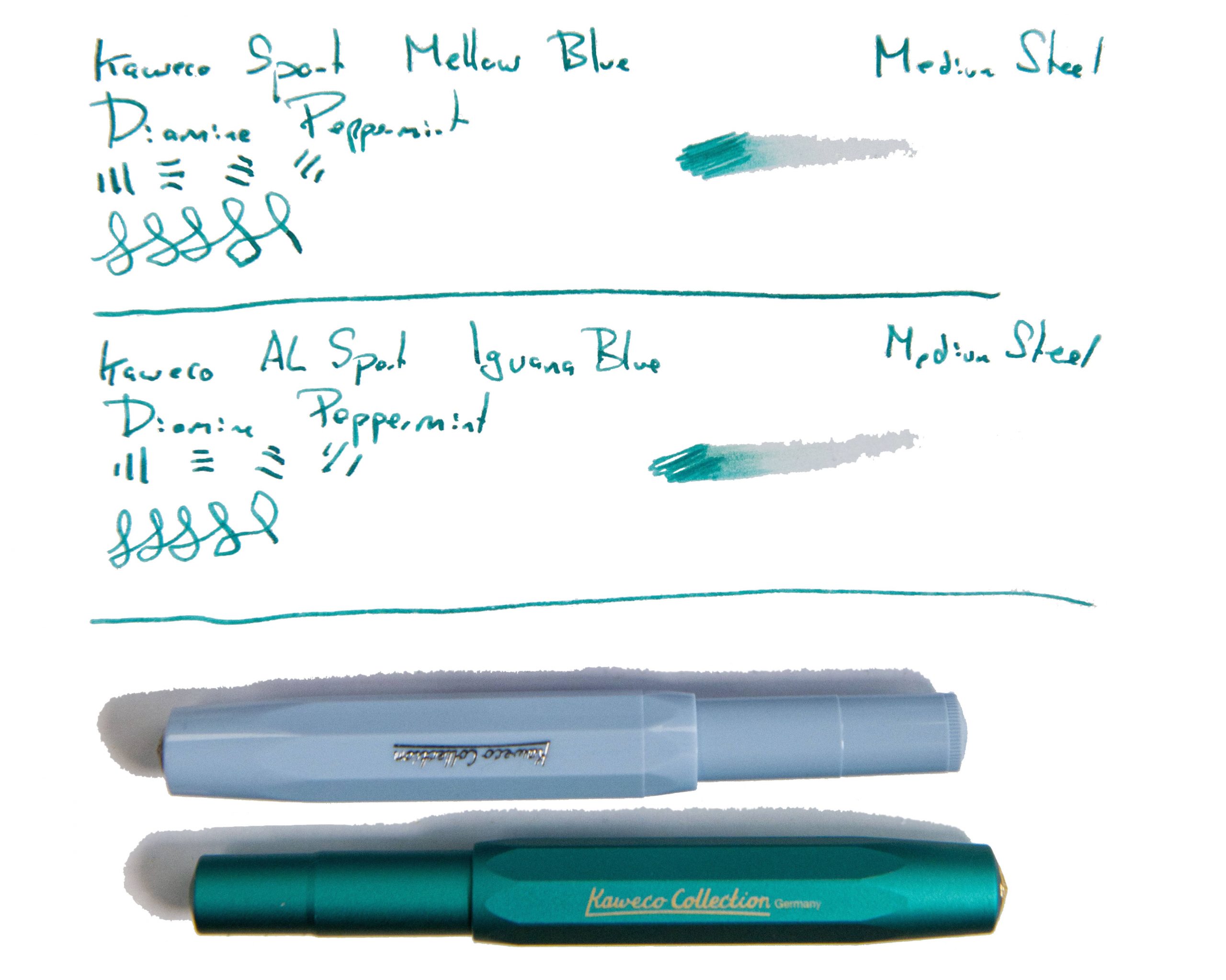 Pen! What is it good for? The Sport’s natural home is in your pocket, of course, but these two specials were also made for showing off, so it’s up to you. Generally we’d suggest these are for leisure use rather than business, but who are we to dictate?
Pen! What is it good for? The Sport’s natural home is in your pocket, of course, but these two specials were also made for showing off, so it’s up to you. Generally we’d suggest these are for leisure use rather than business, but who are we to dictate? VFM The plastic Mellow Blue will set you back about £25, which is quite fair value, and the swisher aluminium Iguana Blue more like £70 – not crazy money at all, but it makes sense to try an ‘entry level’ Sport to check out whether the format works for you first.
VFM The plastic Mellow Blue will set you back about £25, which is quite fair value, and the swisher aluminium Iguana Blue more like £70 – not crazy money at all, but it makes sense to try an ‘entry level’ Sport to check out whether the format works for you first. The only way is ethics These are made in Germany with decent labour conditions, and Kaweco haven’t gone crazy with the packaging, so things look healthy on the ethical front.
The only way is ethics These are made in Germany with decent labour conditions, and Kaweco haven’t gone crazy with the packaging, so things look healthy on the ethical front.
 Our overall recommendation These will sell like the proverbial hot cakes; if either takes your fancy, get it quickly!
Our overall recommendation These will sell like the proverbial hot cakes; if either takes your fancy, get it quickly! Where to get hold of one All your favourite fountain pen specialists are likely to have these in stock – as long as they last.
Where to get hold of one All your favourite fountain pen specialists are likely to have these in stock – as long as they last. This meta-review references:
This meta-review references: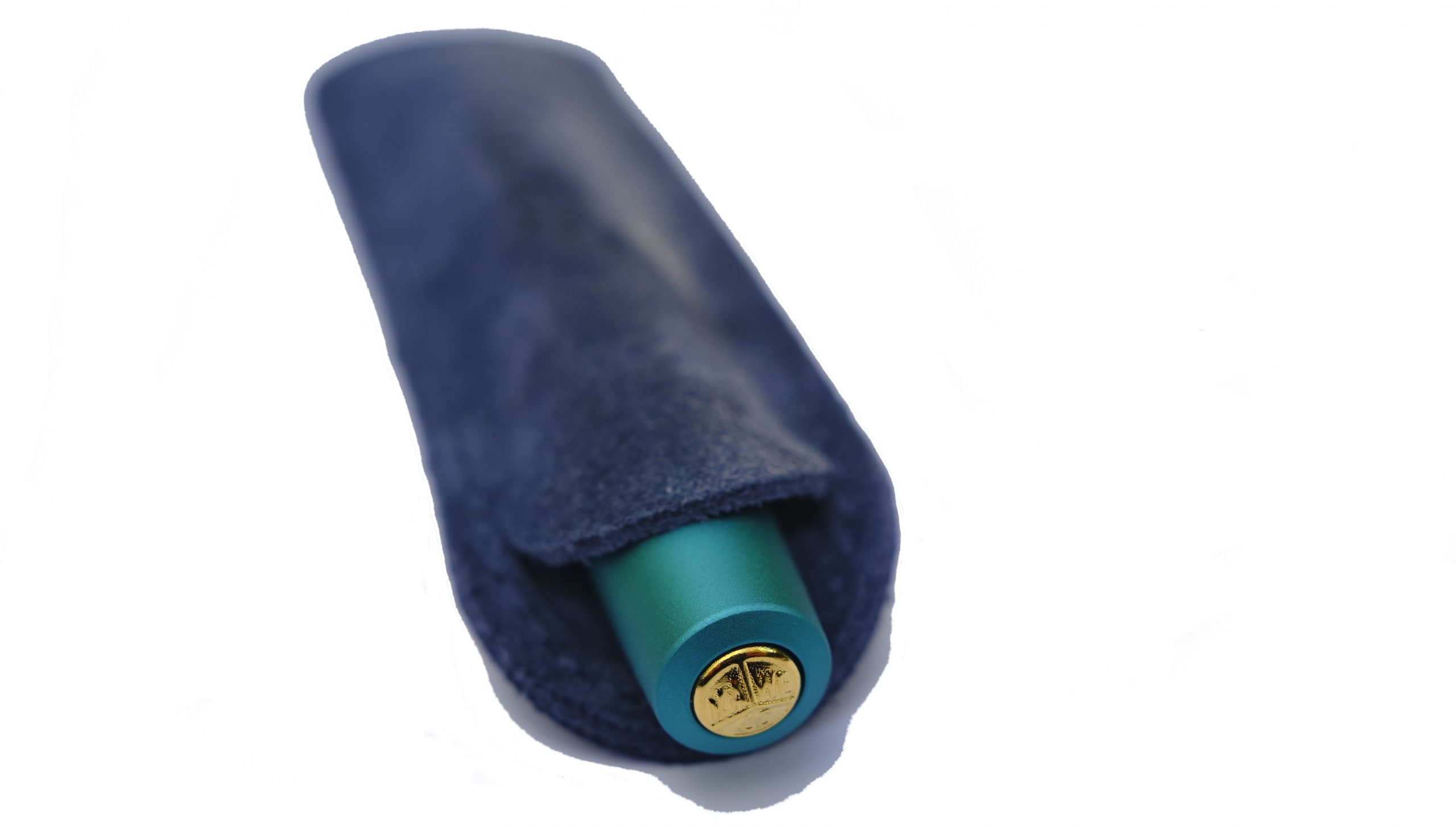
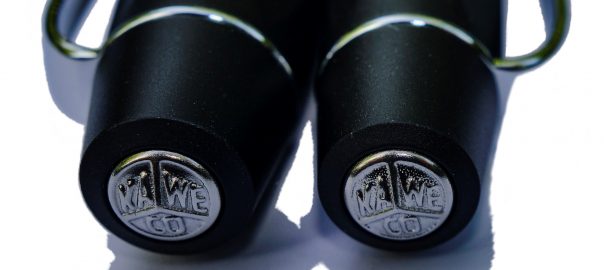
 How it looks Actually, they came up with two Originals, with very different nib sizes. The smaller version uses the diminutive short #5 060 Bock nib familiar from the Sport and Lilliput models, which unfortunately looks a little stunted in a long pen like this. The larger Original, though, uses a nice big #6 250 nib which looks in proper proportion – a bit like a scaled-up Sport, keeping the distinctive octagonal profile which is something of a Kaweco calling card.
How it looks Actually, they came up with two Originals, with very different nib sizes. The smaller version uses the diminutive short #5 060 Bock nib familiar from the Sport and Lilliput models, which unfortunately looks a little stunted in a long pen like this. The larger Original, though, uses a nice big #6 250 nib which looks in proper proportion – a bit like a scaled-up Sport, keeping the distinctive octagonal profile which is something of a Kaweco calling card. 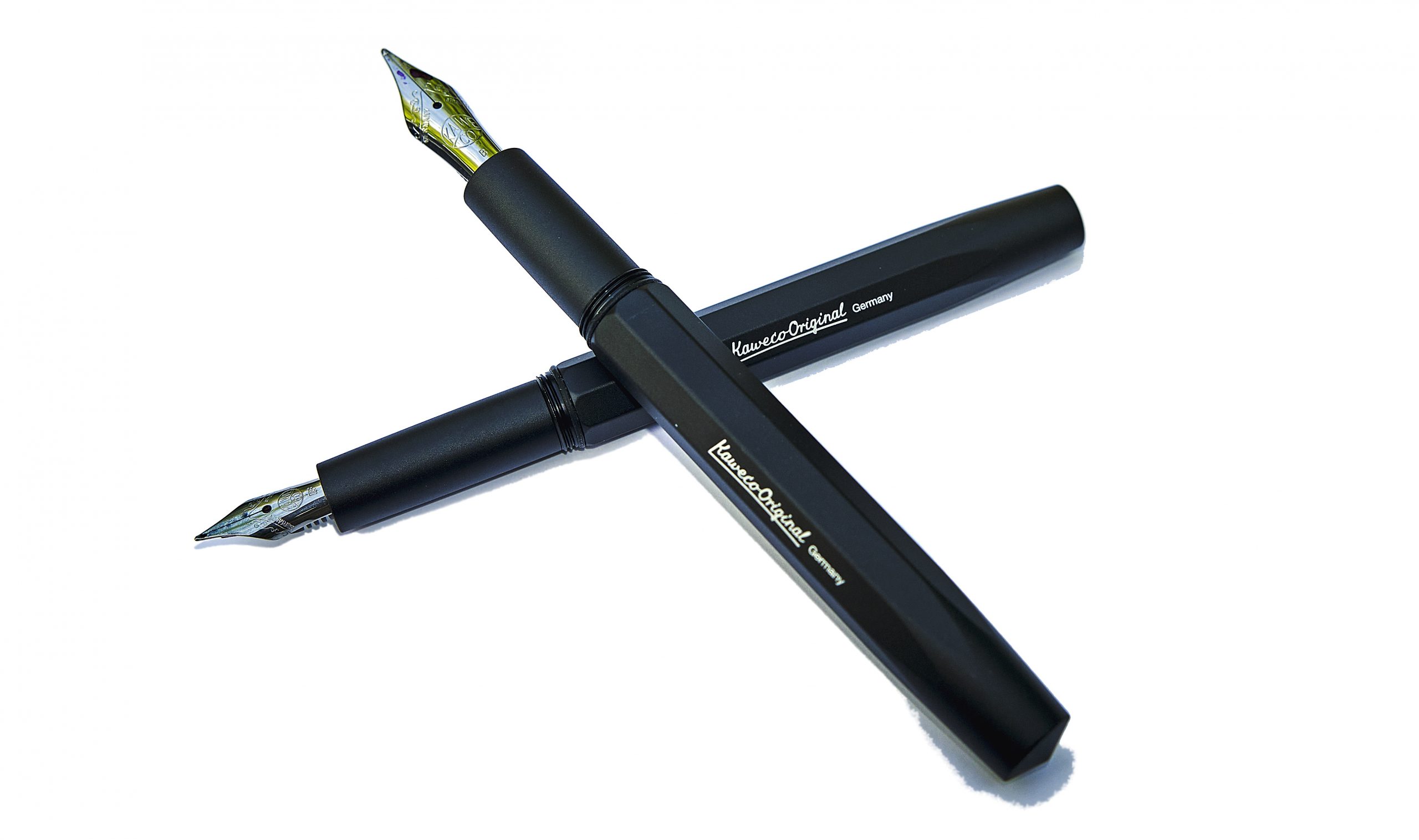 How it feels Both Originals feel solid yet, thanks to aluminium construction, not terribly heavy. On the whole, robust but usable.
How it feels Both Originals feel solid yet, thanks to aluminium construction, not terribly heavy. On the whole, robust but usable.  How it fills An obvious advantage over the Sport is that the Originals have room for a full-size converter, and Kaweco have maximised that gain by threading the inside collar of the section to allow for a screw-in converter, helpfully also available from Kaweco in a range of colours. For reasons which remain a mystery, we chose purple for our test units, but retailers might be well advised to provide a converter as standard; it’s a much more ‘premium’ experience filling up with ink from a proper bottle, and being able to prime a feed with a quick twist of the converter can help when inks prove to be a little on the dry side.
How it fills An obvious advantage over the Sport is that the Originals have room for a full-size converter, and Kaweco have maximised that gain by threading the inside collar of the section to allow for a screw-in converter, helpfully also available from Kaweco in a range of colours. For reasons which remain a mystery, we chose purple for our test units, but retailers might be well advised to provide a converter as standard; it’s a much more ‘premium’ experience filling up with ink from a proper bottle, and being able to prime a feed with a quick twist of the converter can help when inks prove to be a little on the dry side.  Crucially, how it writes… As ever that depends upon the nib fitted and the ink too, but we had a varied experience with our test units. The tiny 060 had an EF nib which struggled to lay enough ink down really, but as we’d probably elect to upgrade to a more fitting Bock 076 (sadly not yet available in Kaweco branding) anyway, perhaps that’s not the end of the world. The larger 250 had a B tip which surprised several of our reviewers with how well it performed as a ‘daily driver’, so that looks like the winner.
Crucially, how it writes… As ever that depends upon the nib fitted and the ink too, but we had a varied experience with our test units. The tiny 060 had an EF nib which struggled to lay enough ink down really, but as we’d probably elect to upgrade to a more fitting Bock 076 (sadly not yet available in Kaweco branding) anyway, perhaps that’s not the end of the world. The larger 250 had a B tip which surprised several of our reviewers with how well it performed as a ‘daily driver’, so that looks like the winner.  Pen! What is it good for? These might be a bit pricy for a school pen, but they are robust enough to serve as a daily driver for a more grown-up writer.
Pen! What is it good for? These might be a bit pricy for a school pen, but they are robust enough to serve as a daily driver for a more grown-up writer. 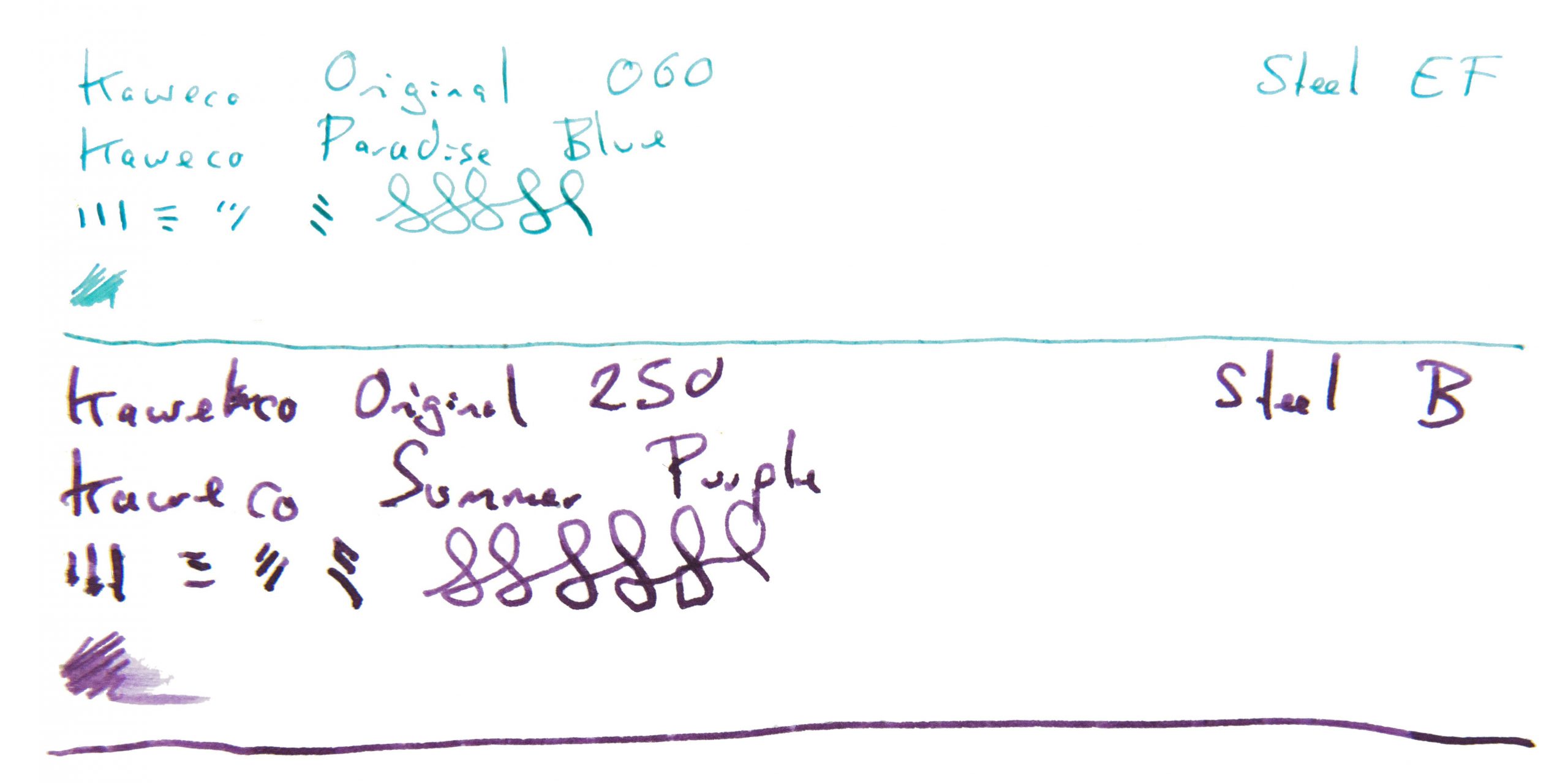 VFM At a ‘street price’ close to £100 for the #6 version these are not cheap, to be honest, so our tip would be to buy from a bricks-and-mortar shop where you can try a number of nibs and get the one which really works for you. It needs to be usable to be worth the money, at this price point.
VFM At a ‘street price’ close to £100 for the #6 version these are not cheap, to be honest, so our tip would be to buy from a bricks-and-mortar shop where you can try a number of nibs and get the one which really works for you. It needs to be usable to be worth the money, at this price point.  The only way is ethics Made in the EU, and packaged sensibly, there’s little to worry about on this front.
The only way is ethics Made in the EU, and packaged sensibly, there’s little to worry about on this front. 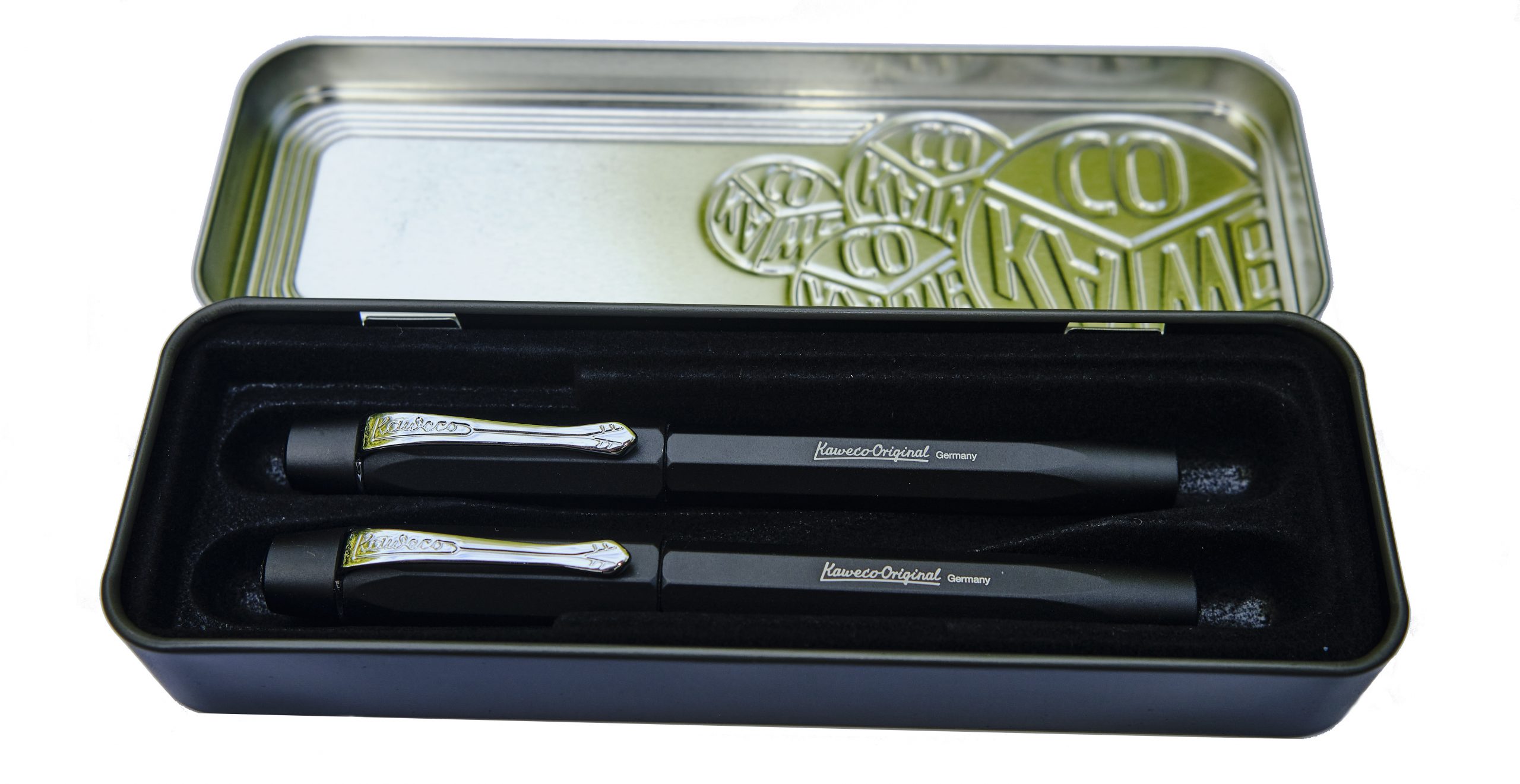 If this isn’t quite your cup of tea, but almost… If the 060 nib just looks a bit short, fitting an after-market 076 will probably help. If you like the 250 version but for some reason just don’t dig a polygonal cross-section, Kaweco’s smoothly cylindrical Supra may be more your thing.
If this isn’t quite your cup of tea, but almost… If the 060 nib just looks a bit short, fitting an after-market 076 will probably help. If you like the 250 version but for some reason just don’t dig a polygonal cross-section, Kaweco’s smoothly cylindrical Supra may be more your thing.  Our overall recommendation For people who enjoy brief scribbles with a Sport but want something similar but a bit larger for extended writing sessions – and that might be rather a lot of us – one of the Originals could well be the answer. But given that the right nib makes a big difference, we’d recommend trying them out in the flesh first.
Our overall recommendation For people who enjoy brief scribbles with a Sport but want something similar but a bit larger for extended writing sessions – and that might be rather a lot of us – one of the Originals could well be the answer. But given that the right nib makes a big difference, we’d recommend trying them out in the flesh first.  Where to get hold of one It’s a fairly new model at present but most fountain pen shops are likely to consider this soon. Buying in person looks less hassle than online purchasing given the possibility of a bit of nibular trial-and-error.
Where to get hold of one It’s a fairly new model at present but most fountain pen shops are likely to consider this soon. Buying in person looks less hassle than online purchasing given the possibility of a bit of nibular trial-and-error.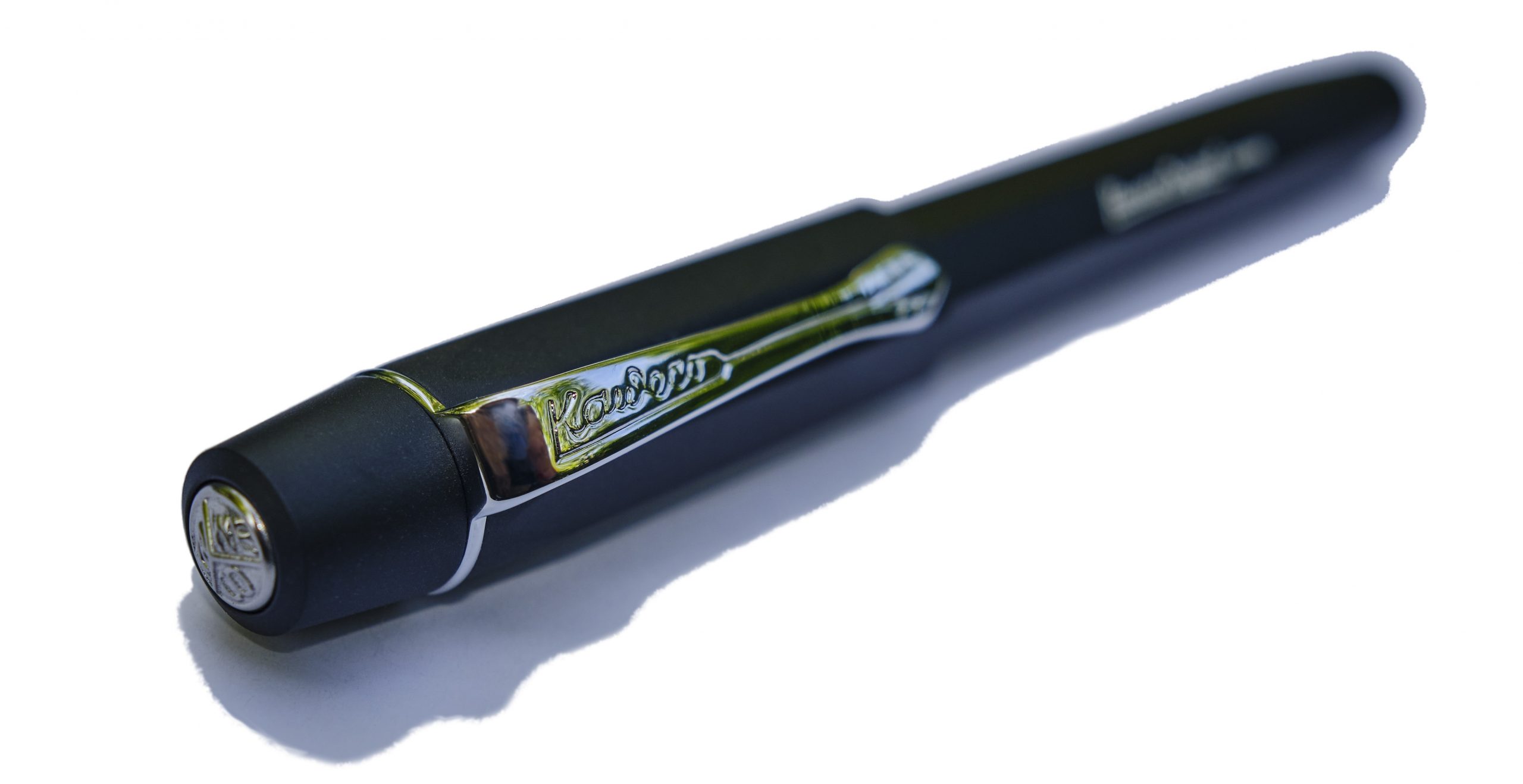
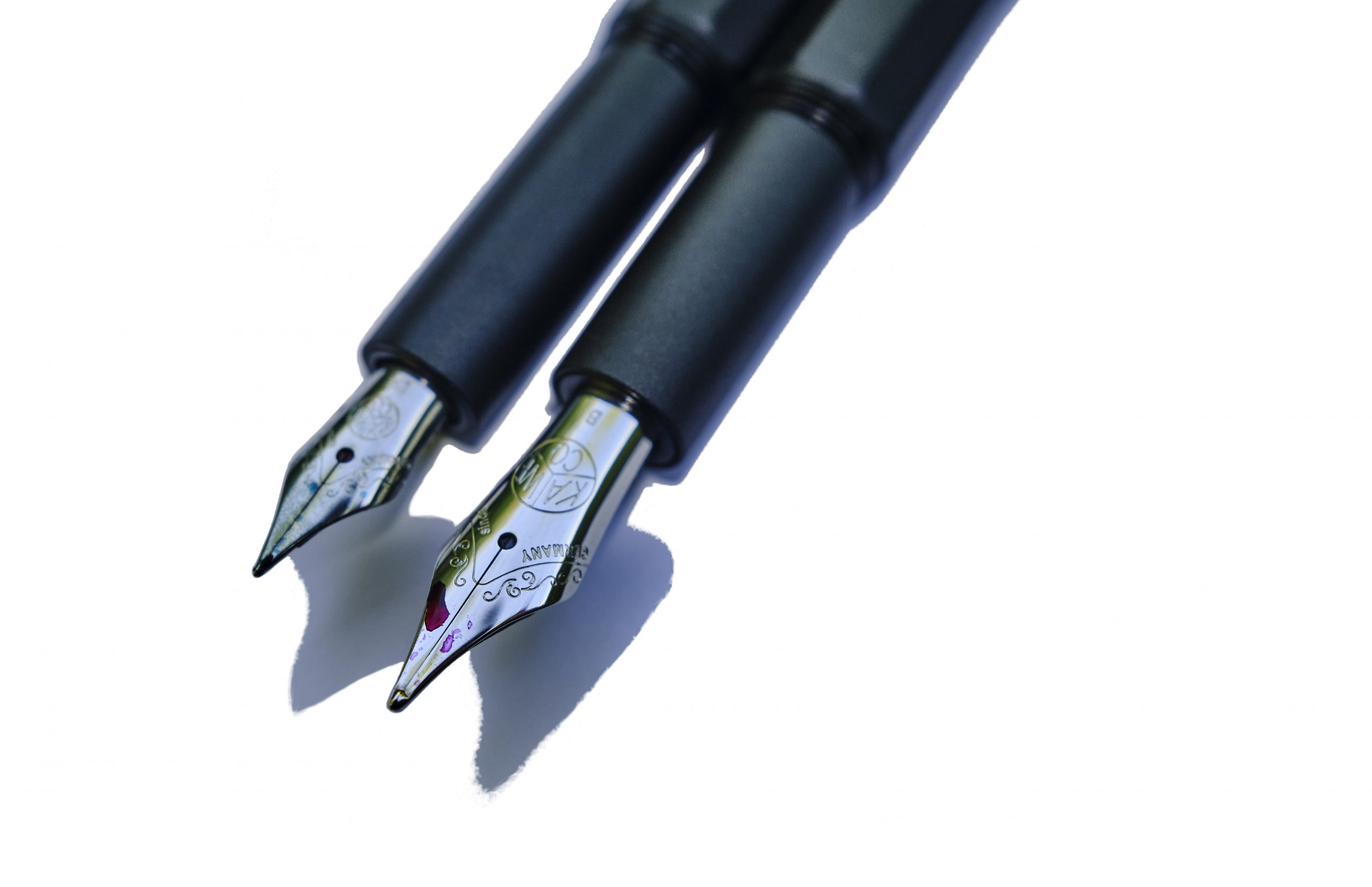 Thanks to Kaweco for the review samples.
Thanks to Kaweco for the review samples. 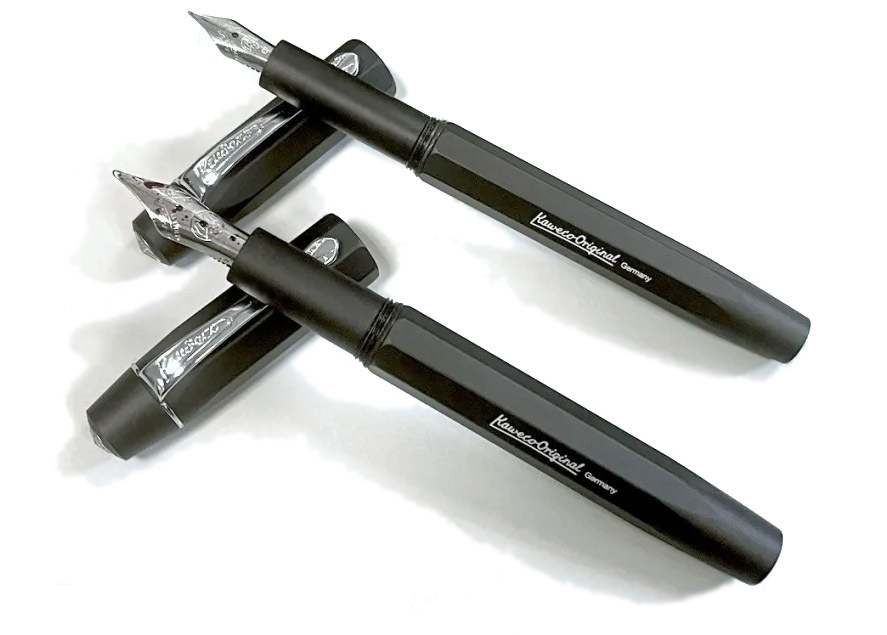
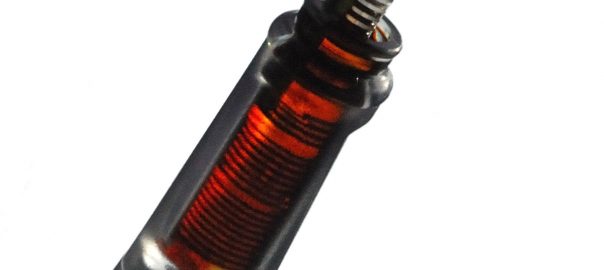
 A little bit of history We’ve reviewed the Perkeo before, so
A little bit of history We’ve reviewed the Perkeo before, so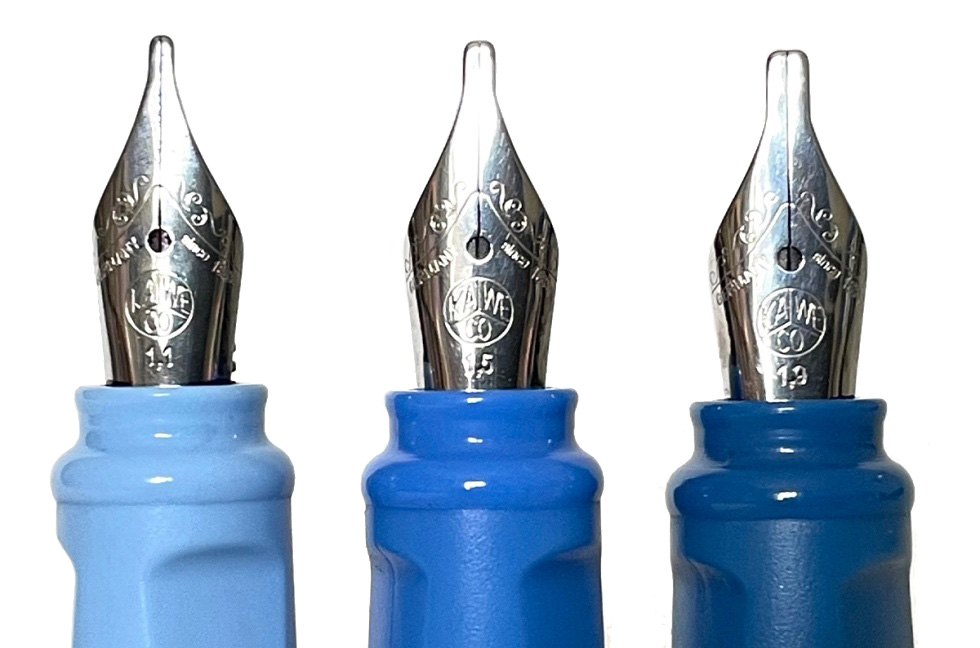

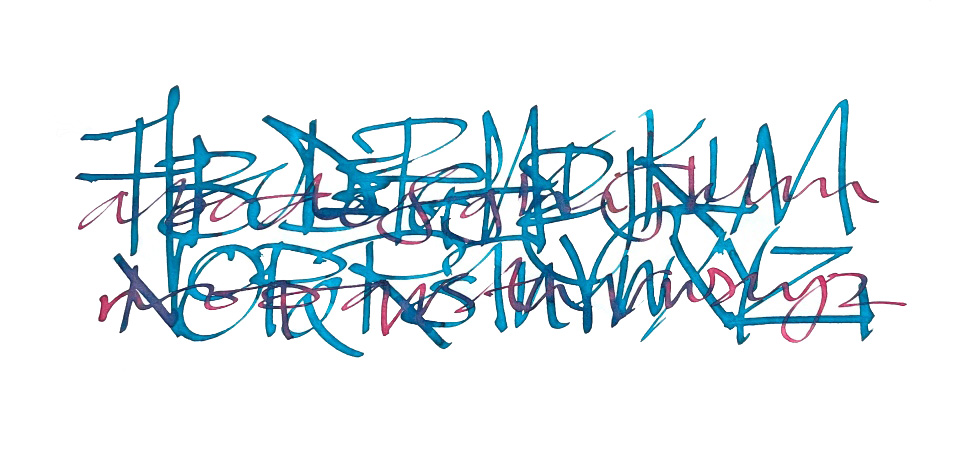 How it fills There’s space for a brace of small international cartridges in the barrel, or a full-sized converter, which really looks the business in the demonstrator version.
How it fills There’s space for a brace of small international cartridges in the barrel, or a full-sized converter, which really looks the business in the demonstrator version.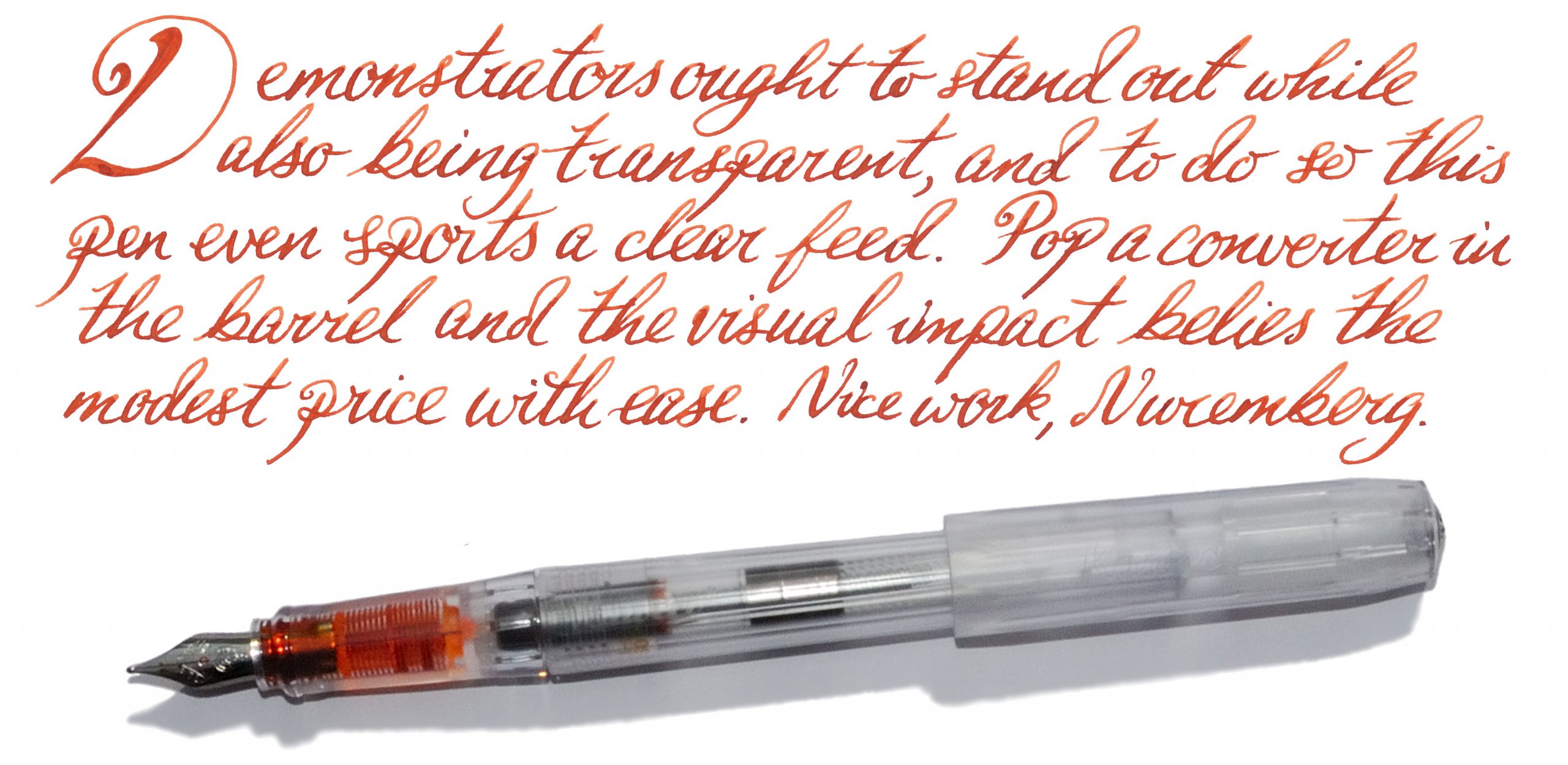
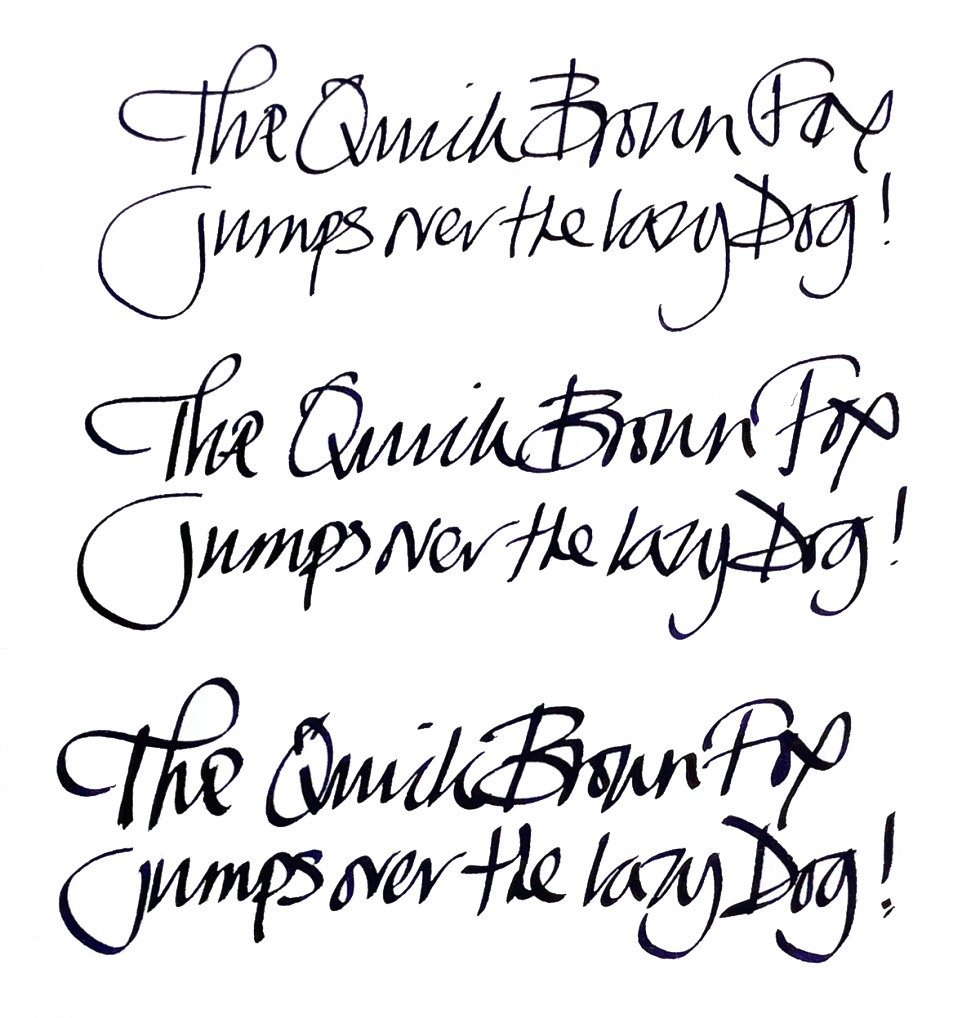
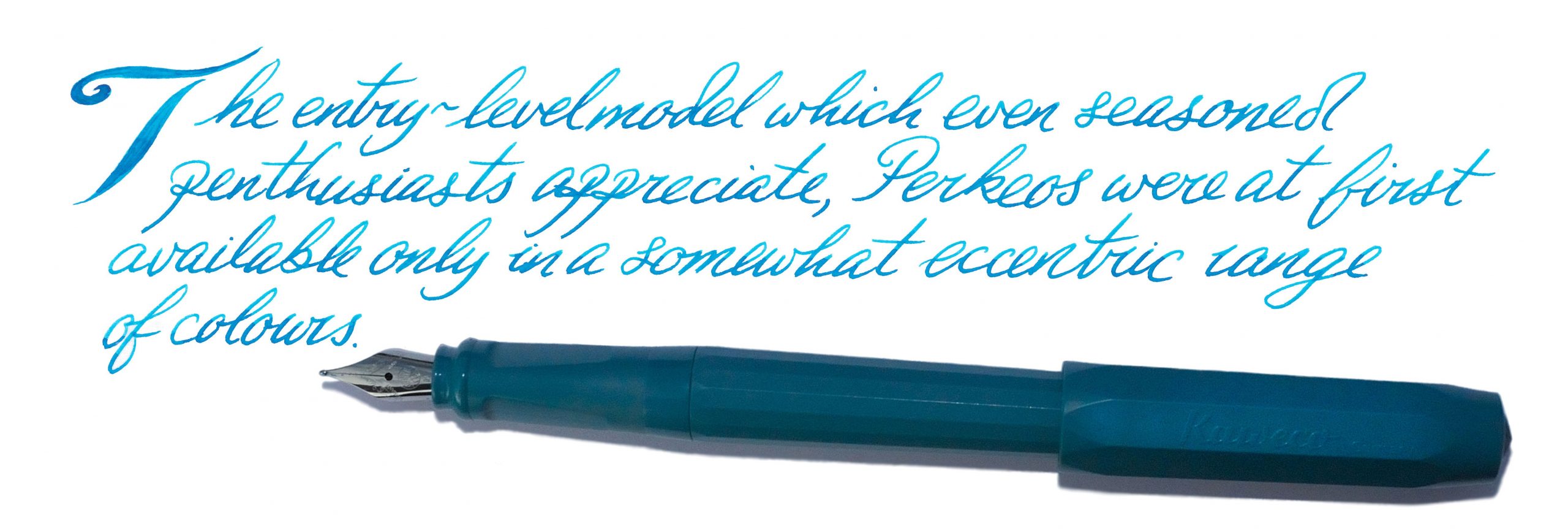

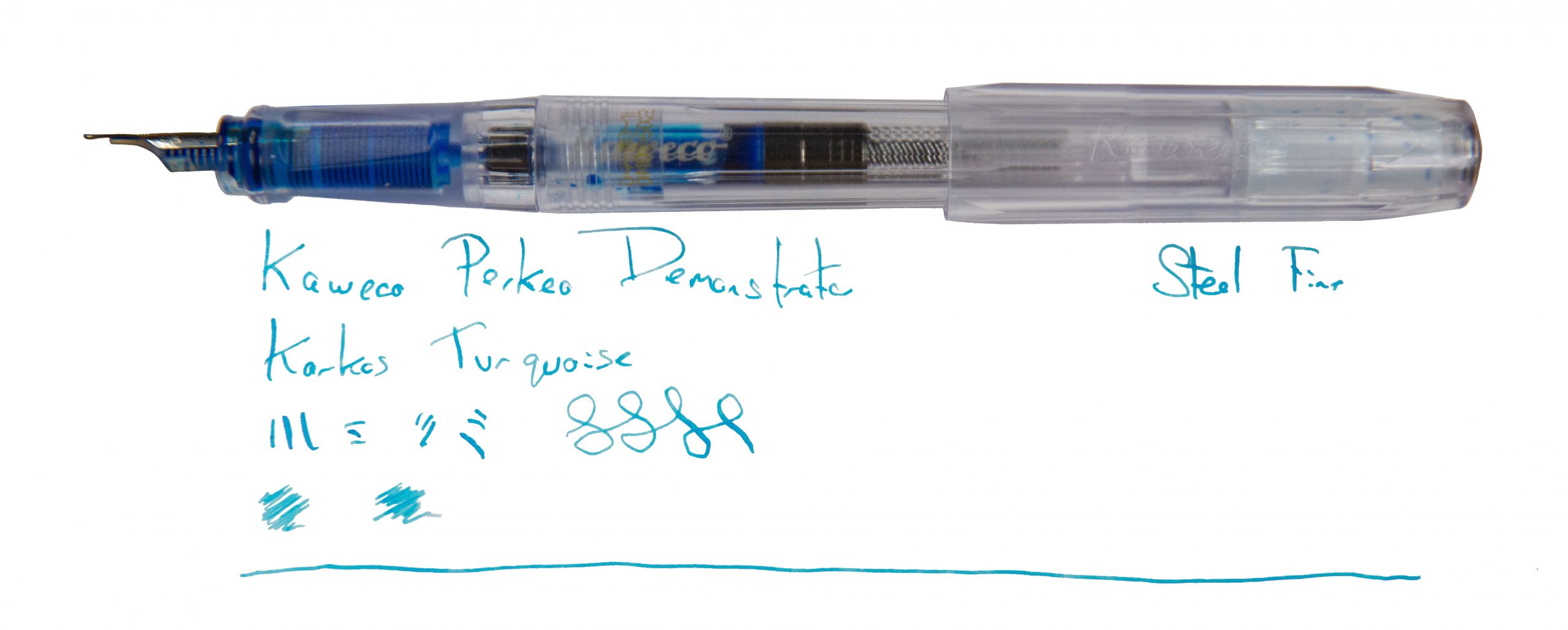



 How it looks The Supra appears, from a distance, to be a Lilliput with a cinched waist. Up close, it’s evident that, if anything, it’s a Lilliput which has been to sumo training camp and bulked-up mightily; this thing has a nice big #6 nib, for starters! Then, if you remove the extension tube, it suddenly looks like a tiddler again. Hmm.
How it looks The Supra appears, from a distance, to be a Lilliput with a cinched waist. Up close, it’s evident that, if anything, it’s a Lilliput which has been to sumo training camp and bulked-up mightily; this thing has a nice big #6 nib, for starters! Then, if you remove the extension tube, it suddenly looks like a tiddler again. Hmm.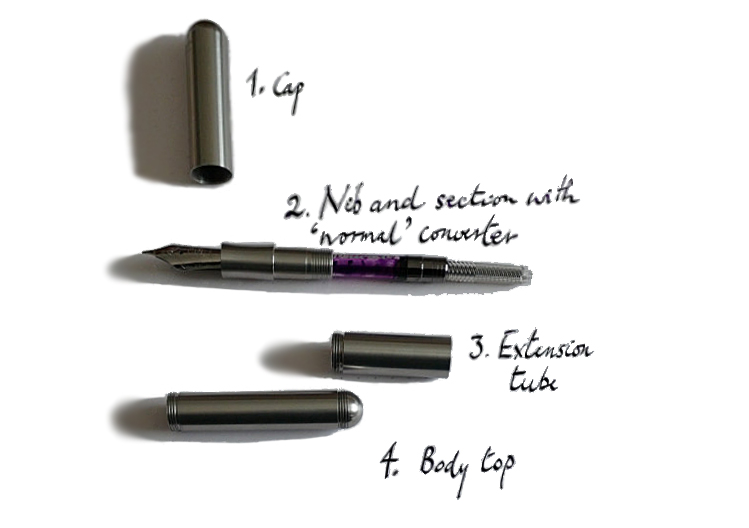 How it feels That extension is the Supra MacGuffin. Fit it between barrel and section, and the result is a standard-length pen which feels about right in the hand, albeit a little long with the cap posted. Omit the extension tube, and the Supra is a pocket pen which feels about right with the cap posted, even if the large #6 nib can be a bit of a surprise to anyone more used to the dainty 060 (small #5) of the Lilliput and Sport models. Once you’ve worked out which length works for you, this feels solid and well-balanced, although the somewhat short grip section might not suit everyone.
How it feels That extension is the Supra MacGuffin. Fit it between barrel and section, and the result is a standard-length pen which feels about right in the hand, albeit a little long with the cap posted. Omit the extension tube, and the Supra is a pocket pen which feels about right with the cap posted, even if the large #6 nib can be a bit of a surprise to anyone more used to the dainty 060 (small #5) of the Lilliput and Sport models. Once you’ve worked out which length works for you, this feels solid and well-balanced, although the somewhat short grip section might not suit everyone.
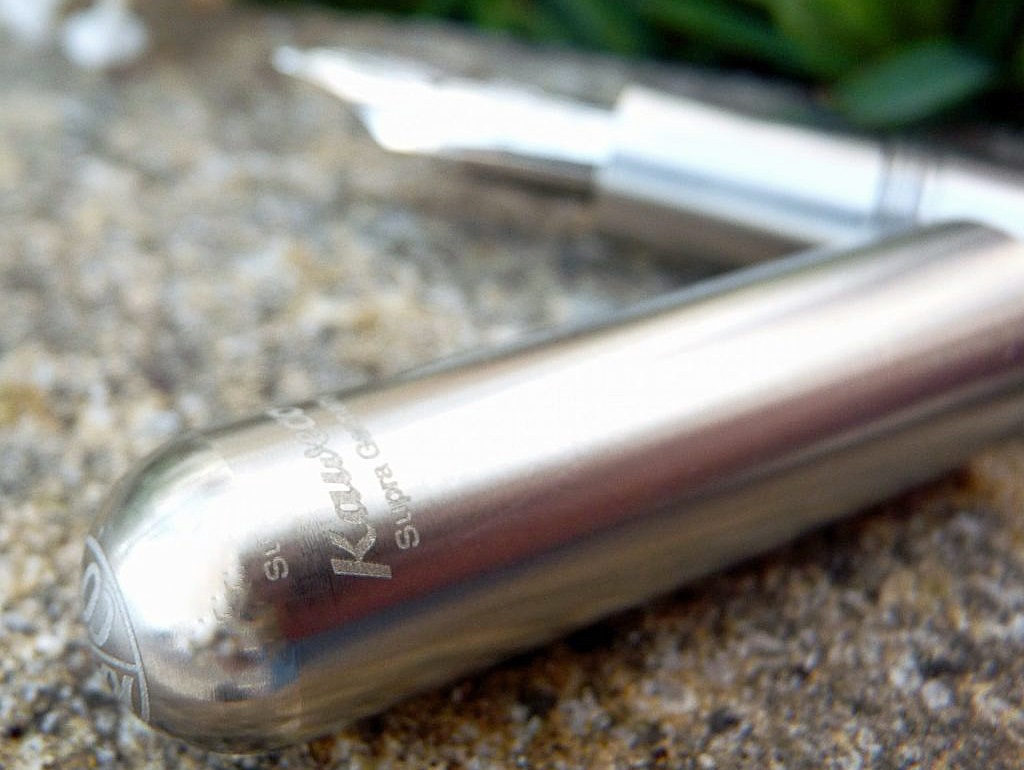

 VFM This isn’t cheap, with current retail prices getting dangerously near three figures. It’s a good, solid, reliable fountain pen which will probably outlast most purchasers, but that’s still quite a lot of money for a moderately stylised length of plumbing. Whether the value proposition adds up largely depends upon whether the feel of the pen works for you so well that you want to pick it up again and again. We’d really like to see Kaweco sell the unadorned short-form Supra for those who just want this, with the extension tube available as an optional secondary purchase, both to reduce waste and get that price down a little. In the mean-time, while half of our testers found the pen a bit too heavy and ‘industrial’ for their tastes, the other half loved it and two are now proud owners.
VFM This isn’t cheap, with current retail prices getting dangerously near three figures. It’s a good, solid, reliable fountain pen which will probably outlast most purchasers, but that’s still quite a lot of money for a moderately stylised length of plumbing. Whether the value proposition adds up largely depends upon whether the feel of the pen works for you so well that you want to pick it up again and again. We’d really like to see Kaweco sell the unadorned short-form Supra for those who just want this, with the extension tube available as an optional secondary purchase, both to reduce waste and get that price down a little. In the mean-time, while half of our testers found the pen a bit too heavy and ‘industrial’ for their tastes, the other half loved it and two are now proud owners.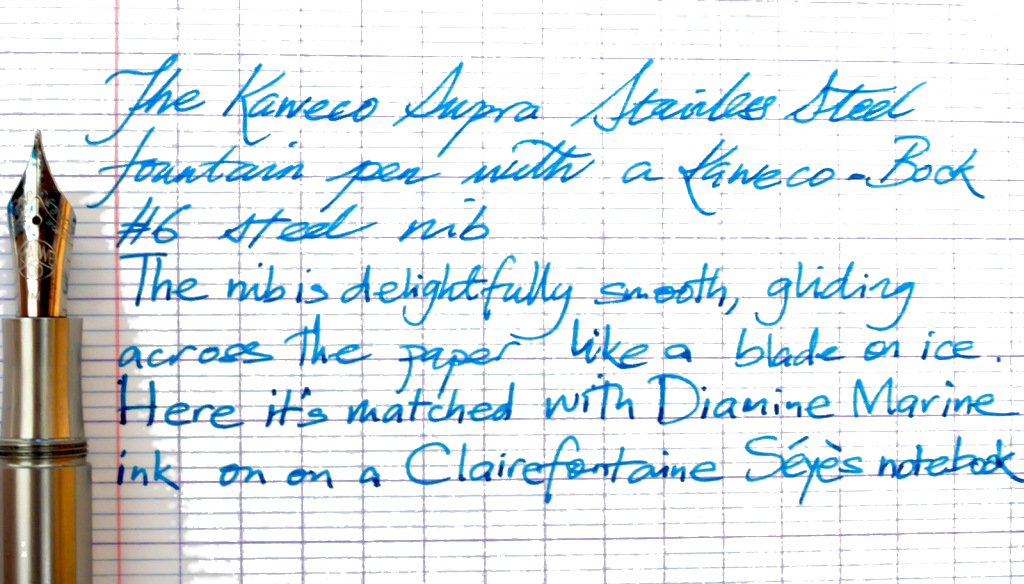
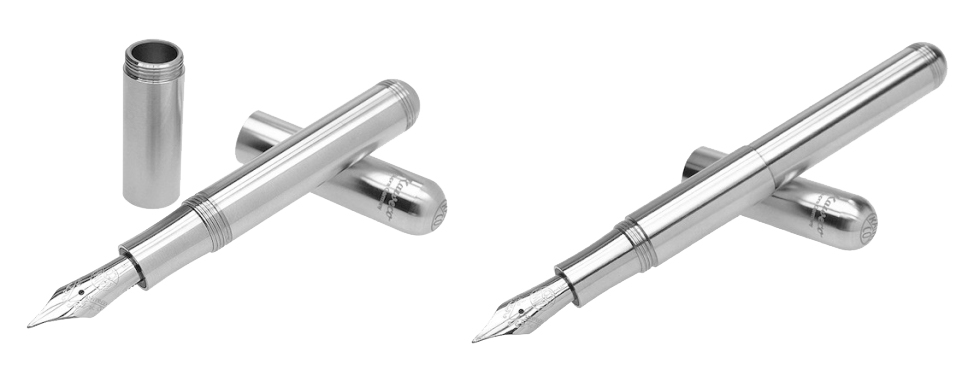 Our overall recommendation As is so often the case, try before you by. As a heavy, uncompromising and essentially indestructible pen it won’t be everyone’s cup of tea. But if you’re the sort of rugged EDC fan who likes to be able to smash your way out of a burning car using the same pen that you deploy to write a note to the insurers immediately afterwards, a Bauhaus-toting art-school grad with strong hands, or just a sniper with literary aspirations, this is absolutely the pen for you.
Our overall recommendation As is so often the case, try before you by. As a heavy, uncompromising and essentially indestructible pen it won’t be everyone’s cup of tea. But if you’re the sort of rugged EDC fan who likes to be able to smash your way out of a burning car using the same pen that you deploy to write a note to the insurers immediately afterwards, a Bauhaus-toting art-school grad with strong hands, or just a sniper with literary aspirations, this is absolutely the pen for you.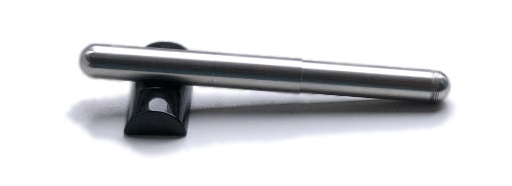
 This meta-review references:
This meta-review references: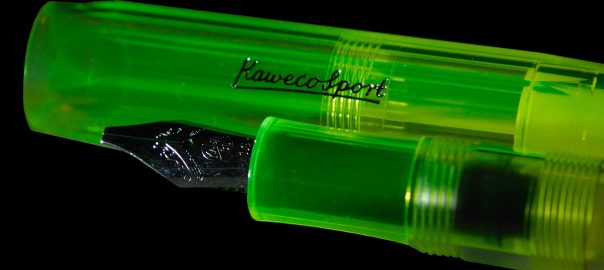
 A little bit of history On the other side of the Atlantic, different religious sects still have their own universities; you can, if you so wish, attend seats of learning gathered under the sway of belief systems not even recognised by the rest of the world, but we shall name no names. A Jesuit university is a relatively mainstream concept compared with some of the more outré outliers, albeit perhaps a surprising place to train as an industrial chemist – but Frank Honn graduated from one such, and went on to discover a novel use for the fluorescent dye pyranine as the first highlighting ink. It was a success, by any standards, and generations of pupils have grown up with felt-tip pens full of the stuff ever since. But felt-tips are horrible, and fountain pens are not, so Kaweco set out to make a highlighter that persons of taste might actually be able to contemplate using.
A little bit of history On the other side of the Atlantic, different religious sects still have their own universities; you can, if you so wish, attend seats of learning gathered under the sway of belief systems not even recognised by the rest of the world, but we shall name no names. A Jesuit university is a relatively mainstream concept compared with some of the more outré outliers, albeit perhaps a surprising place to train as an industrial chemist – but Frank Honn graduated from one such, and went on to discover a novel use for the fluorescent dye pyranine as the first highlighting ink. It was a success, by any standards, and generations of pupils have grown up with felt-tip pens full of the stuff ever since. But felt-tips are horrible, and fountain pens are not, so Kaweco set out to make a highlighter that persons of taste might actually be able to contemplate using.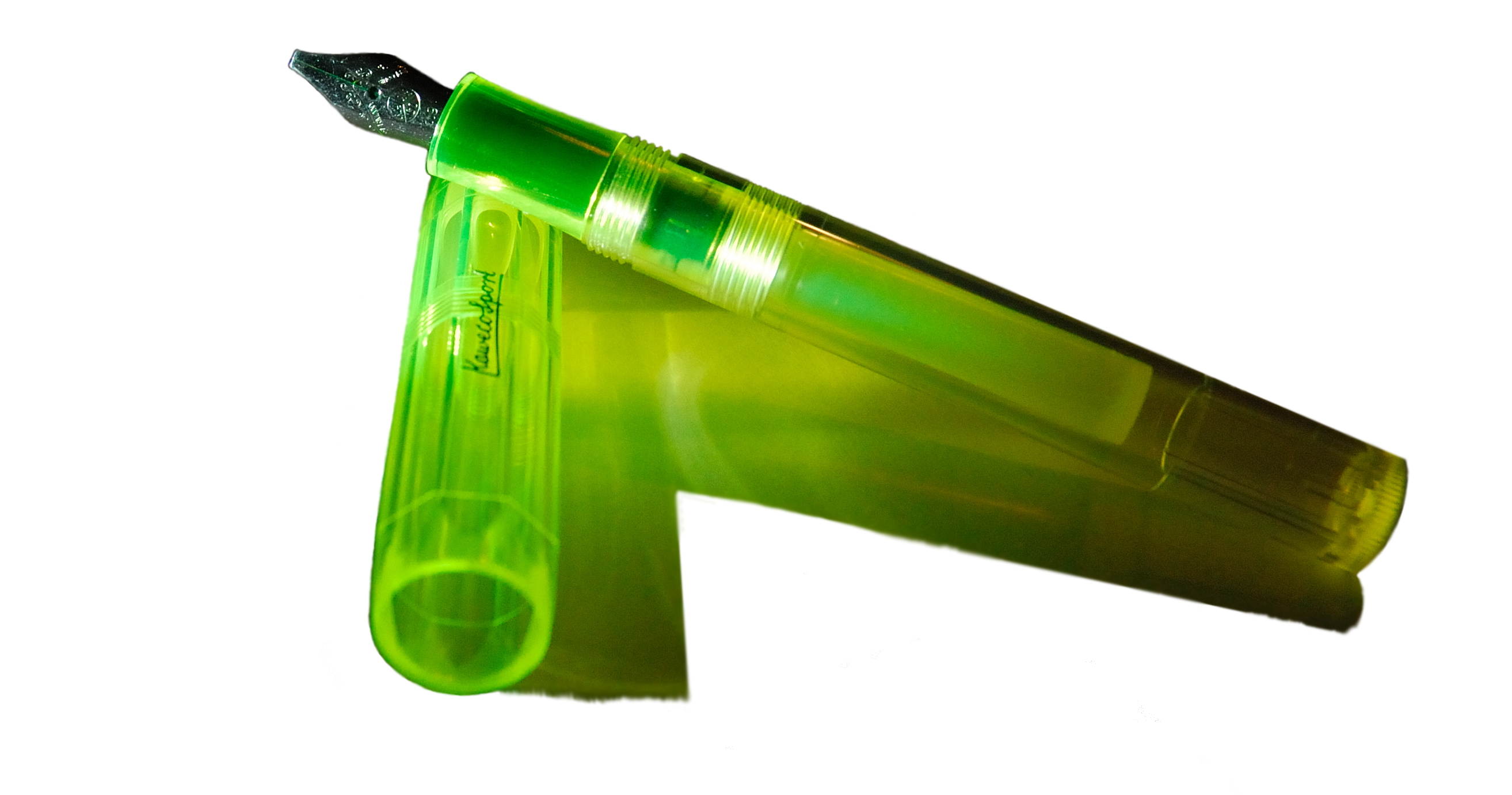 How it looks Did we say this was tasteful? Well, maybe it depends upon your own taste! It’s certainly rather loud – but there’s no mistaking what it’s for.
How it looks Did we say this was tasteful? Well, maybe it depends upon your own taste! It’s certainly rather loud – but there’s no mistaking what it’s for.
 How it fills Via cartridges specially filled with unworldly glowing fluids.
How it fills Via cartridges specially filled with unworldly glowing fluids.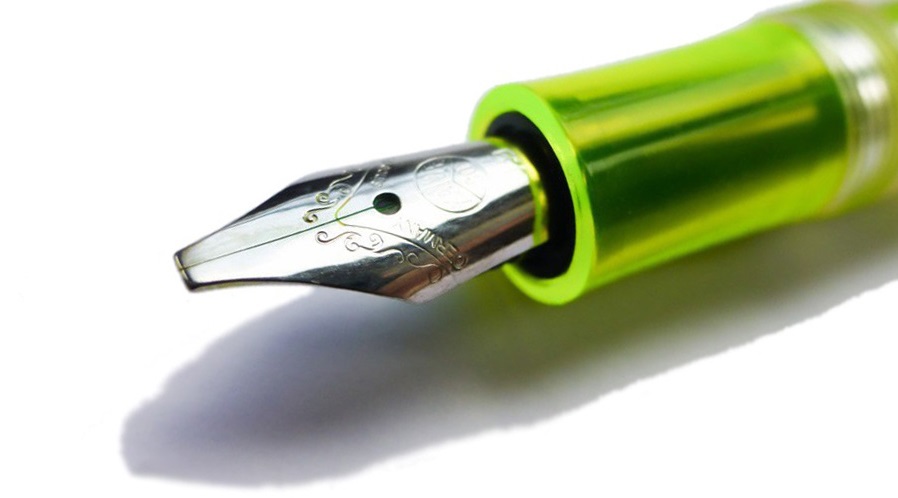
 Pen! What is it good for? It’s good for making up documents for editing or review, of course. It would probably also be good for baffling pen thieves in the work place; this is one pen which the ballpoint brigade won’t know where to even start with!
Pen! What is it good for? It’s good for making up documents for editing or review, of course. It would probably also be good for baffling pen thieves in the work place; this is one pen which the ballpoint brigade won’t know where to even start with!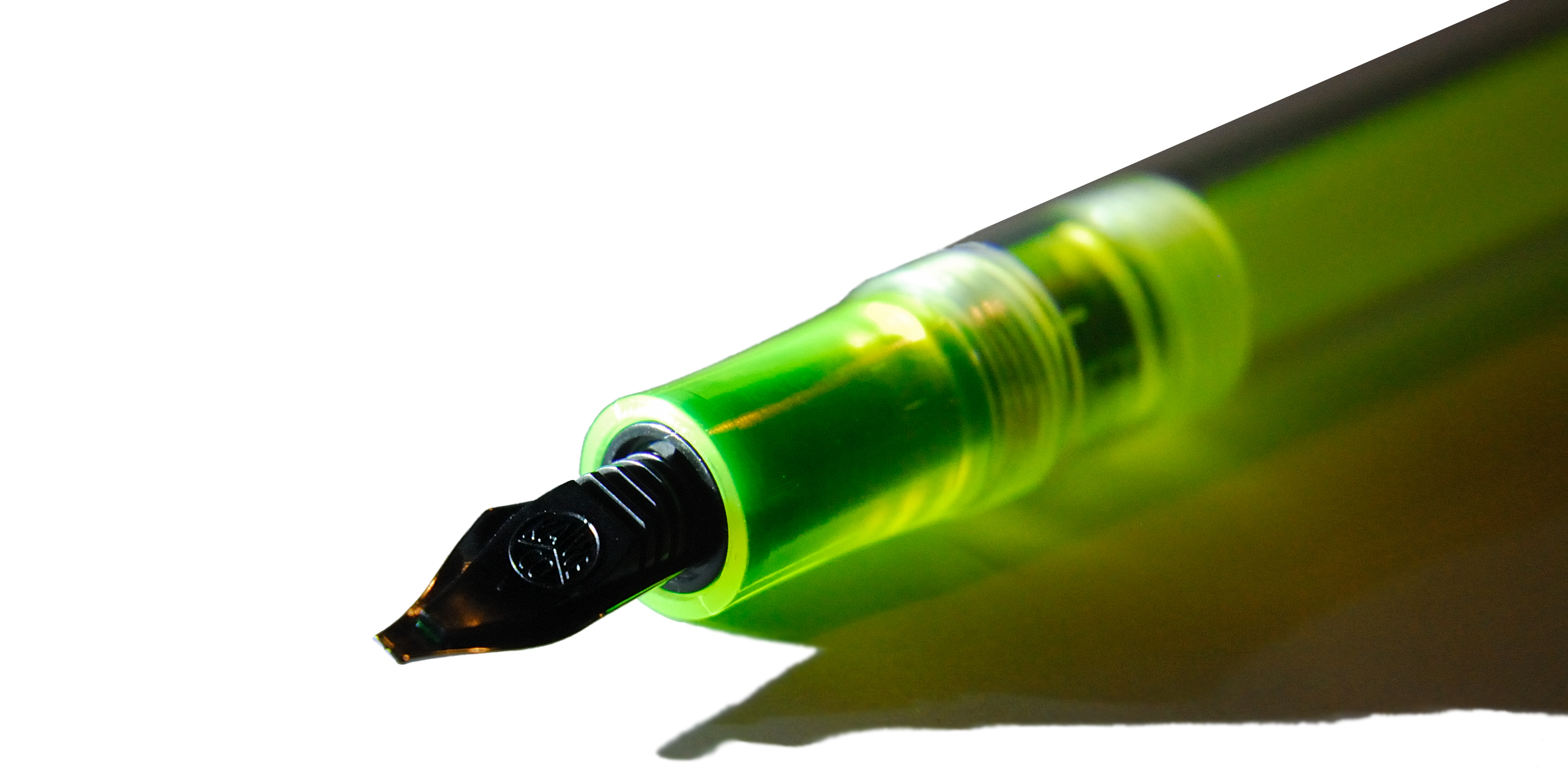 VFM Shop around a bit and you can get this set, complete with a box of cartridges, for less than £30. Admittedly that would buy a lot of nasty cheap disposable highlighters, but you’d hate them – and this will probably last for decades. Fair value, then.
VFM Shop around a bit and you can get this set, complete with a box of cartridges, for less than £30. Admittedly that would buy a lot of nasty cheap disposable highlighters, but you’d hate them – and this will probably last for decades. Fair value, then.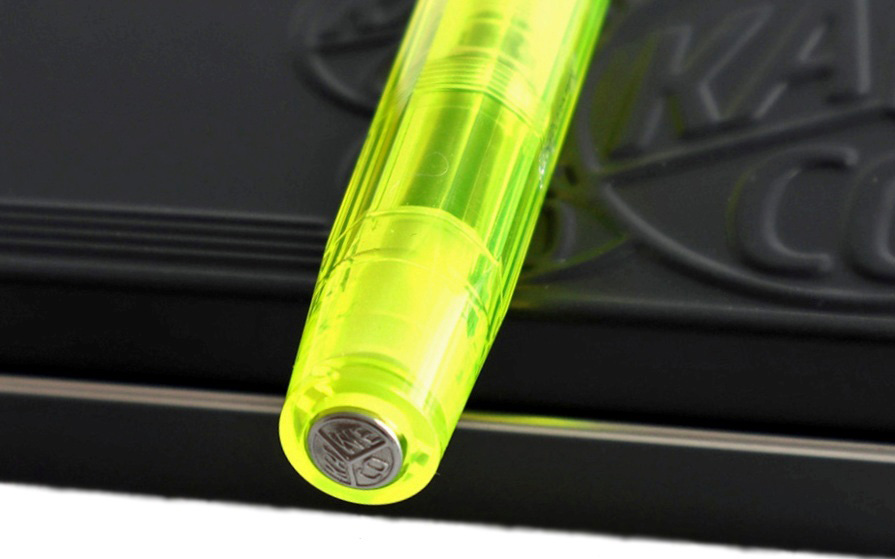
 Our overall recommendation Think about whether you really do all that much highlighting, and perhaps invest in a pack of the highlighter ink cartridges first to see if you take to using an italic fountain pen for this purpose – but if the answer to both is yes then this is, like pyranine, a ready solution.
Our overall recommendation Think about whether you really do all that much highlighting, and perhaps invest in a pack of the highlighter ink cartridges first to see if you take to using an italic fountain pen for this purpose – but if the answer to both is yes then this is, like pyranine, a ready solution.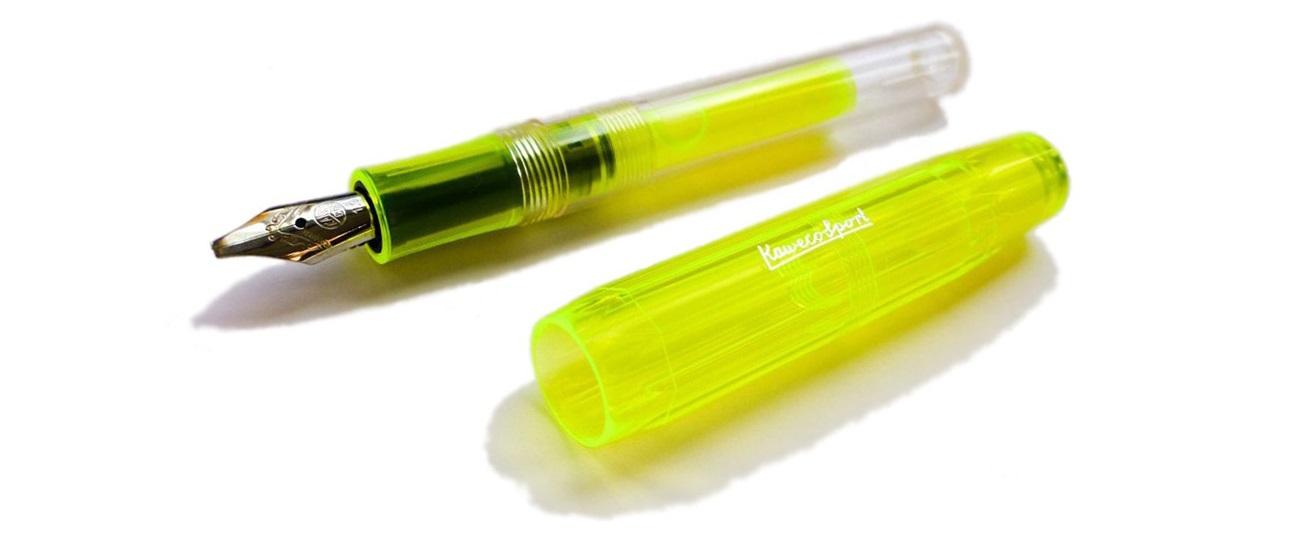
 This meta-review references:
This meta-review references: Thanks to Kaweco for the review sample.
Thanks to Kaweco for the review sample.
 How it looks Very deep red, matt, lustrous and slightly shiny. Paired with the pencil and popped into a ‘chilli red’ sleeve, it looks irresistibly good.
How it looks Very deep red, matt, lustrous and slightly shiny. Paired with the pencil and popped into a ‘chilli red’ sleeve, it looks irresistibly good. How it feels Light but tactile. Unless you specifically prefer heavier pens like the brass Sport (as some of us do!), this is a good mid-point on the mass spectrum.
How it feels Light but tactile. Unless you specifically prefer heavier pens like the brass Sport (as some of us do!), this is a good mid-point on the mass spectrum.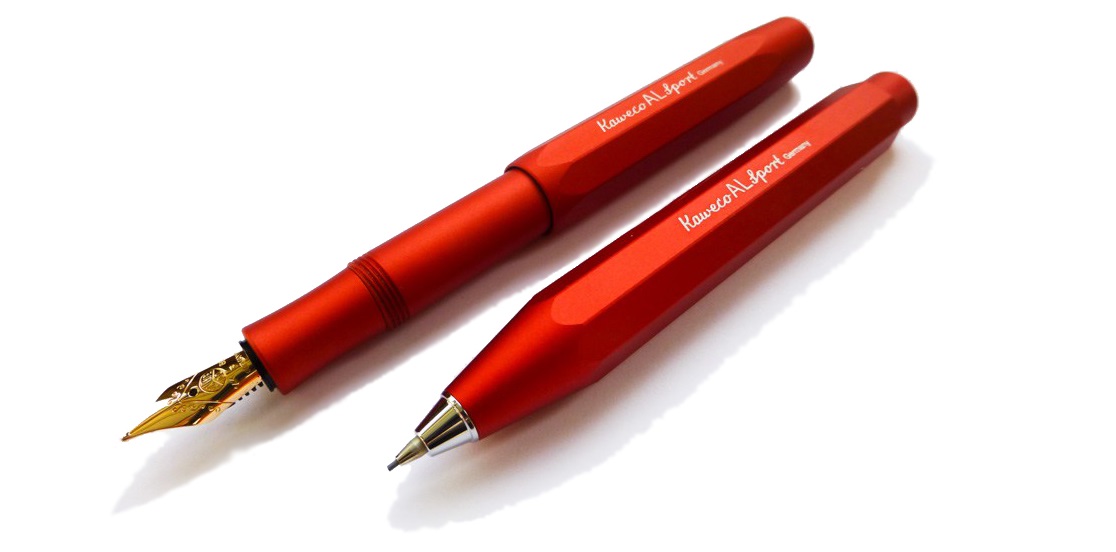 How it fills As with all Sports this is a straightforward short international cartridge number. There is a converter, and it does work, but the fluid capacity is so limited that investing in a syringe is often the best tactic for long-term cohabitation with this petite performer. The pencil takes 0.7mm lead, and there’s plenty of that around.
How it fills As with all Sports this is a straightforward short international cartridge number. There is a converter, and it does work, but the fluid capacity is so limited that investing in a syringe is often the best tactic for long-term cohabitation with this petite performer. The pencil takes 0.7mm lead, and there’s plenty of that around.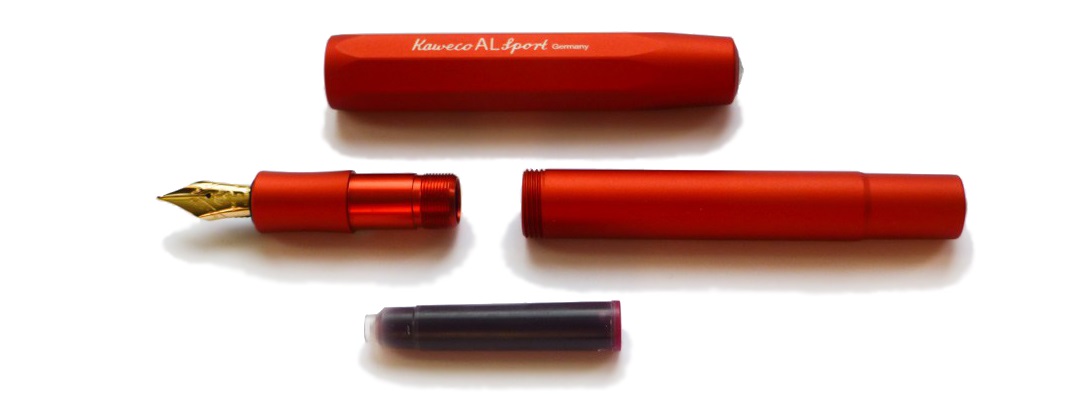 Crucially, how it writes… We rather decadently dropped a gold nib into the test pen, and it wrote very nicely; not much springiness, but just a touch of softness. The standard nibs are getting better these days, too!
Crucially, how it writes… We rather decadently dropped a gold nib into the test pen, and it wrote very nicely; not much springiness, but just a touch of softness. The standard nibs are getting better these days, too!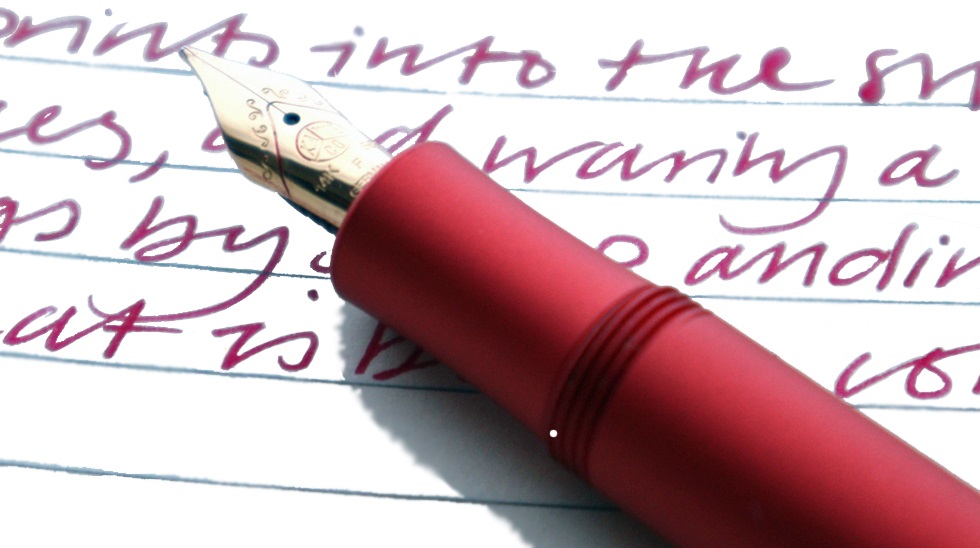
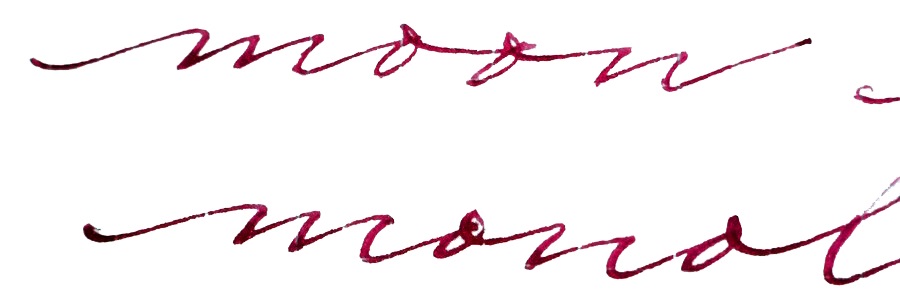
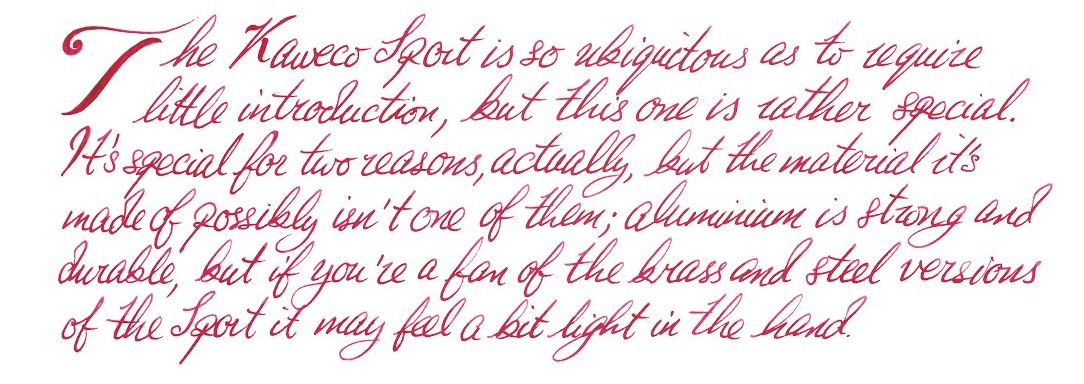
 VFM Middling, honestly. At around £60 this is not a cheap pen, and it will probably cost you more than that on top to get the gold nib. Having said that, this is not a crazily overpriced pen either.
VFM Middling, honestly. At around £60 this is not a cheap pen, and it will probably cost you more than that on top to get the gold nib. Having said that, this is not a crazily overpriced pen either. If this isn’t quite your cup of tea, but almost… One of the hundred or so other Sport finishes might well be. Have a browse…
If this isn’t quite your cup of tea, but almost… One of the hundred or so other Sport finishes might well be. Have a browse… Our overall recommendation If you’re taken with this finish, get one while you can; although we think it’s excellent, it was a special edition so it may not be available forever.
Our overall recommendation If you’re taken with this finish, get one while you can; although we think it’s excellent, it was a special edition so it may not be available forever.
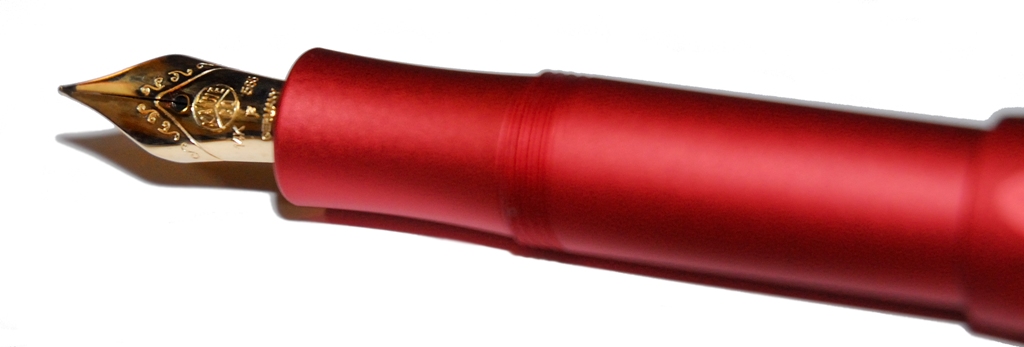
 Thanks to Kaweco for the rather tempting review sample pack; our calligrapher couldn’t bear to let it go!
Thanks to Kaweco for the rather tempting review sample pack; our calligrapher couldn’t bear to let it go!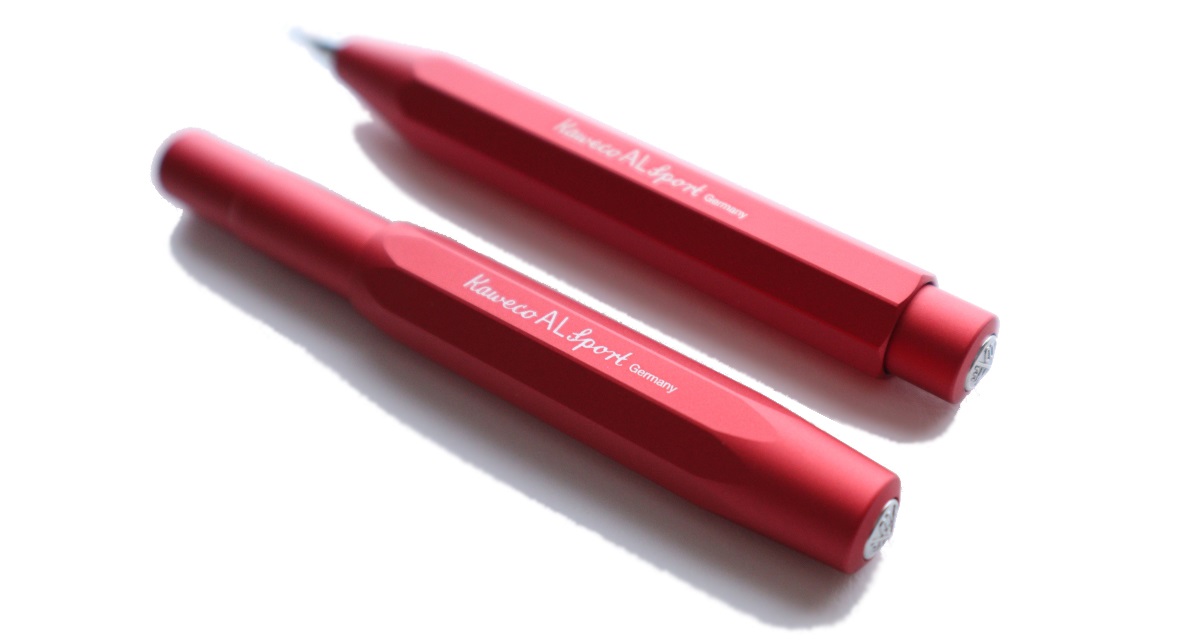
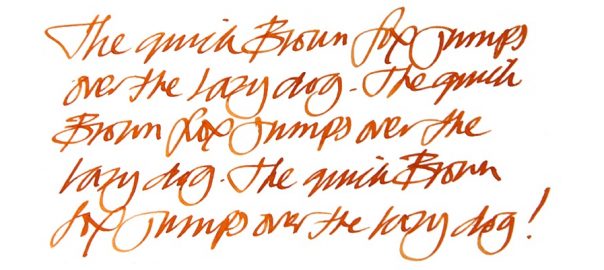


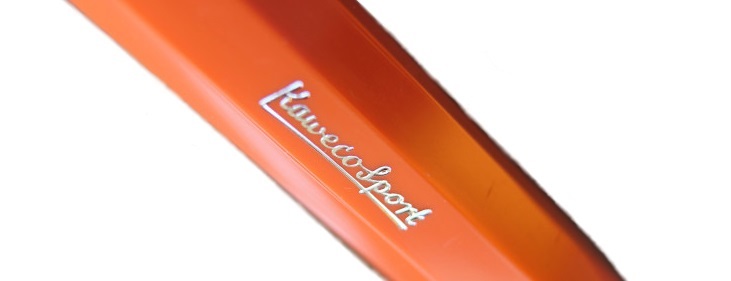 How it looks The shape is, of course, the same as for all Sports. The colour is a reliably foxy dark orange (don’t show it a beagle), with a few silvery highlights. It’s a classy presentation.
How it looks The shape is, of course, the same as for all Sports. The colour is a reliably foxy dark orange (don’t show it a beagle), with a few silvery highlights. It’s a classy presentation.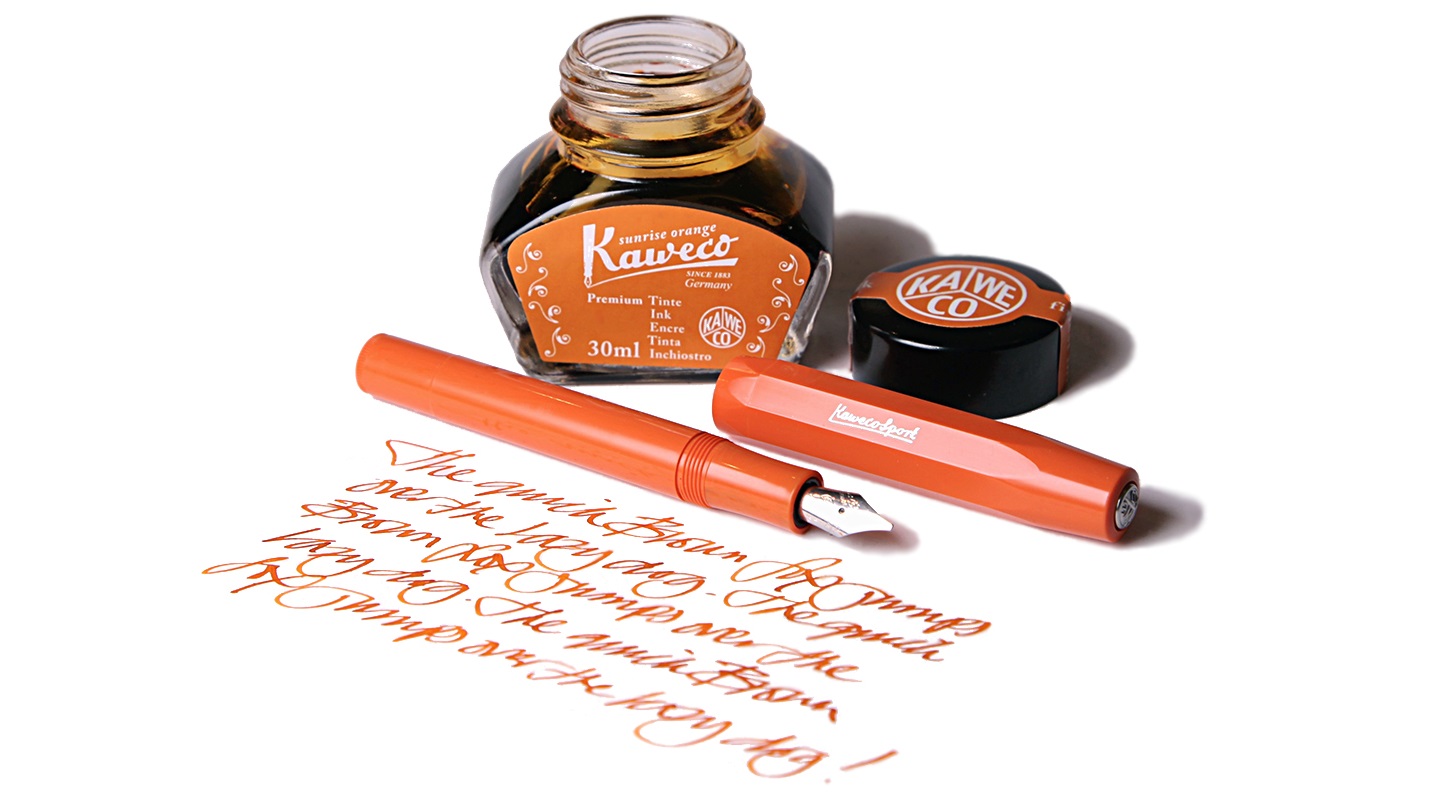
 How it fills The Sport has a legion of fans who also own a syringe, and refilling a cartridge is probably the best way to get a decent supply of ink. There is also a tiny push-rod converter, and it actually does work, but the ink capacity is very modest.
How it fills The Sport has a legion of fans who also own a syringe, and refilling a cartridge is probably the best way to get a decent supply of ink. There is also a tiny push-rod converter, and it actually does work, but the ink capacity is very modest.
 VFM At under £20, this is decent value – no complaints there.
VFM At under £20, this is decent value – no complaints there. If this isn’t quite your cup of tea, but almost… Pick a different Sport; there are dozens to choose from!
If this isn’t quite your cup of tea, but almost… Pick a different Sport; there are dozens to choose from! Our overall recommendation If you like the colour, and you’re already a happy owner of a Sport or two, get one before it bounds over the hedge.
Our overall recommendation If you like the colour, and you’re already a happy owner of a Sport or two, get one before it bounds over the hedge.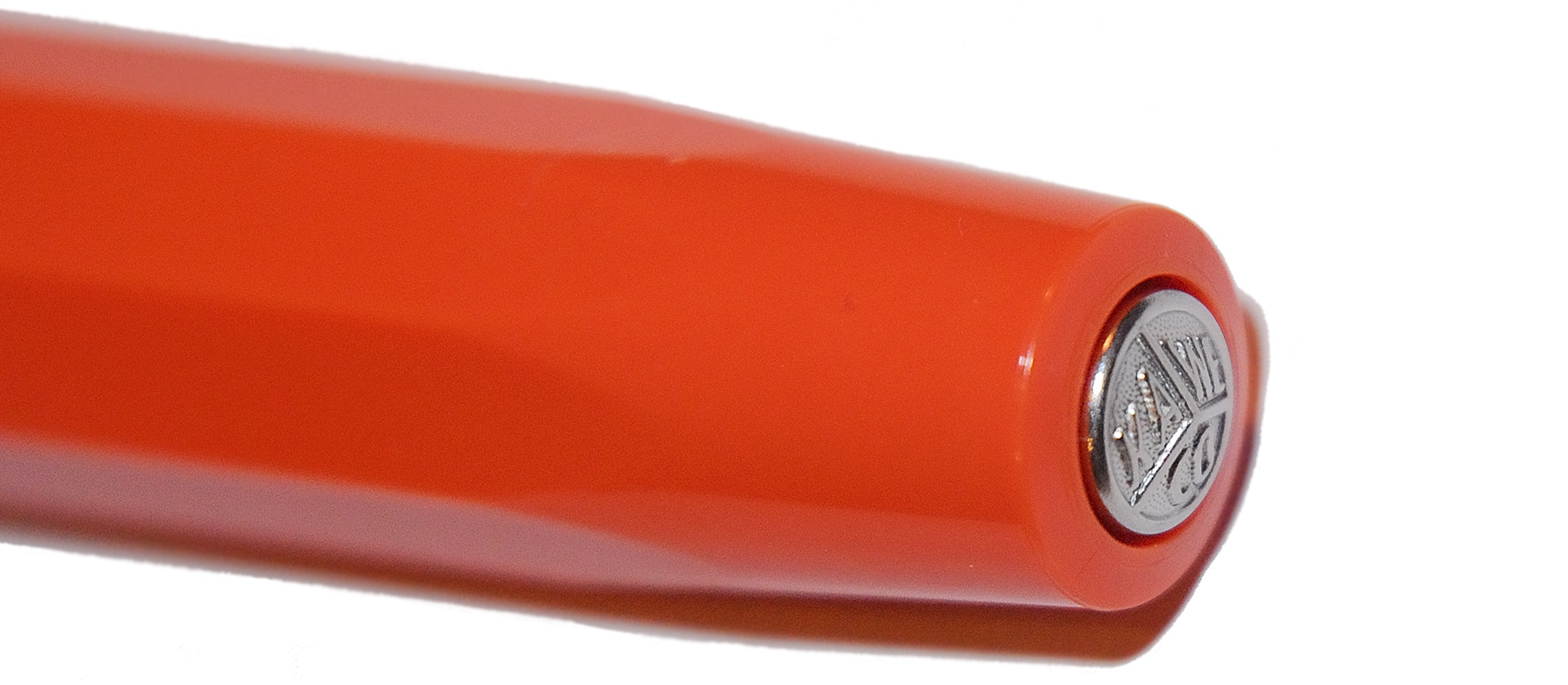 This meta-review references:
This meta-review references: